Vered Neta's Blog
September 14, 2025
7 Rom-Com Adaptations We Love.
Romantic comedies ruled the ’80s and ’90s. Meg Ryan and Tom Hanks practically invented the professional meet-cute, Julia Roberts showed us how to fall in love while shopping for books, and Hugh Grant’s floppy hair had more charisma than half of Hollywood combined. That golden age might have faded a little, but let’s be honest, our appetite for love stories with a side of laughter isn’t going anywhere.
Rom-coms work because they remind us that falling in love is rarely straightforward, it’s awkward, hilarious, messy, and, when the stars align, magical. And as summer slips away (goodbye rooftop cocktails and whirlwind holiday flings, hello oversized sweaters and pumpkin spice), what better time to look back at how some of the most beloved rom-coms have made the leap from page to screen? Because even if summer romance has packed its bags, the season for cosy re-watches and swoon-worthy stories is eternal.
So grab your popcorn, queue up your streaming service of choice, and let’s dive into seven adaptations that prove true love always plays better with a punchline.
7 Secrets to Craft a Rom-Com That Hooks Every Reader.

#1 – Crazy Rich Asians.
Based on Kevin Kwan’s novel.
When Crazy Rich Asians landed in cinemas, it felt like stepping into a modern-day fairytale, if fairytales involved private jets, couture gowns, and a wedding so extravagant it made everyone rethink their budget for floral arrangements.
Rachel (Constance Wu) and Nick (Henry Golding) might look like your standard rom-com couple: smart, independent woman meets charming, secretly loaded man, but throw in a disapproving mother-in-law, a houseful of snarky cousins, and Singapore’s most lavish parties, and you’ve got yourself rom-com nirvana.
Why it works: The genius of Crazy Rich Asians is that it doesn’t just dazzle with glamour; it grounds all that spectacle in real emotional conflict. Sure, the “wedding of the century” scene is jaw-dropping, but it’s the quiet mahjong match between Rachel and Nick’s formidable mother, Eleanor (Michelle Yeoh), that delivers the emotional punch. Comedy flows naturally from supporting players like Awkwafina’s Peik Lin, but it never distracts from the central romance; it highlights it.
The rom-com element it nails: Conflict. A romance without obstacles is just… nice. And nice doesn’t make for great cinema. Here, the hurdles aren’t random; they come from cultural traditions, generational expectations, and questions of identity.
Lesson for writers: Supporting characters and cultural context aren’t just background, they’re fuel. Use them to raise the stakes, add humour, and deepen the love story. A rom-com world should feel as alive and complicated as real love itself.
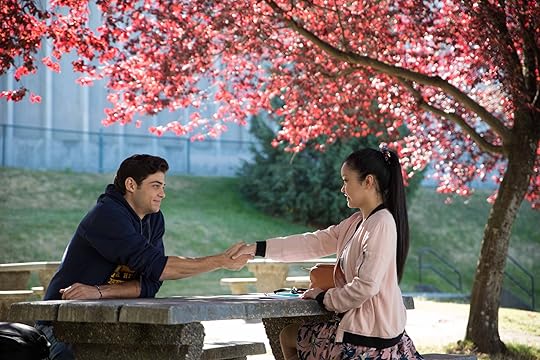 #2 – To All the Boys I’ve Loved Before.
#2 – To All the Boys I’ve Loved Before.
Based on Jenny Han’s YA novel.
Accidentally mailing all your secret love letters? Nightmare fuel. For Lara Jean Covey (Lana Condor), it’s the start of one of Netflix’s most delightful rom-coms.
Enter Peter Kavinsky (Noah Centineo), her fake boyfriend who quickly becomes very real, very swoon-worthy, and the internet’s collective crush for at least three years running.
Why it works: The fake-dating trope is one of rom-com’s most beloved setups, but this adaptation nails it by making the characters feel authentic. Lara Jean is shy, dreamy, and relatable; Peter is confident yet unexpectedly soft. Their dynamic feels fresh, even though the trope itself is familiar. The comedy comes from the awkwardness of being 16 and trying to control feelings you can’t, while the heart comes from watching two teens surprise themselves with real love.
The rom-com element it nails: Chemistry. Every look, every pause, every hand slipped casually into a back pocket (you know the one) makes us believe these two belong together.
Lesson for writers: Tropes aren’t clichés if you infuse them with specificity. Chemistry doesn’t come from plot devices; it comes from how your characters see and change each other. Details matter.
[image error]
#3 – This Time Next Year.
Based on Sophie Cousens’ novel.
Minnie (Sophie Cookson) and Quinn (Lucien Laviscount) were born just minutes apart on New Year’s Day, which basically screams destiny, but fate decides to toy with them first.
Sophie Cousens adapted her own novel for the screen, which means the movie stays true to its delicious mix of missed chances, serendipity, and laugh-out-loud moments.
Why it works: This is a story built on timing, on the frustrating, funny, and sometimes magical ways life keeps people apart until they’re ready to be together. Minnie and Quinn come from totally different worlds, and their collisions are full of humour, but also filled with that irresistible question: what if? By the time they finally connect, the audience has been strung along in the best way possible.
The rom-com element it nails: Timing. The “will-they/won’t-they” rhythm is central to rom-coms, and this film leans into it with confidence. Every near miss makes the resolution more satisfying.
Lesson for writers: Don’t give away the happy ending too soon. Tension is the engine of romance. Carefully placed obstacles, be it bad timing, self-doubt, or outside forces, make the final payoff feel earned.
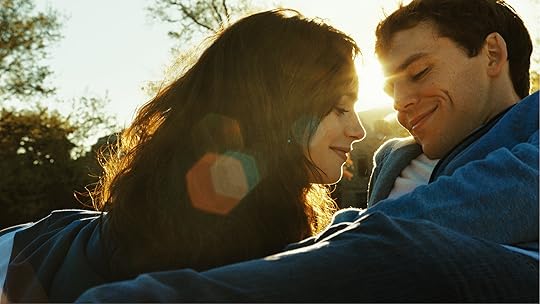
#4 – Love, Rosie.
Based on Cecelia Ahern’s Where Rainbows End*
Rosie (Lily Collins) and Alex (Sam Claflin) are childhood best friends who are clearly meant to be together; everyone sees it but them.
Unfortunately, life keeps pulling them in different directions: missed opportunities, bad timing, and more than one awkward wedding toast later, we’re all sitting at home silently screaming, “Just kiss already!”
Why it works: The story captures the heartbreak and beauty of almost-love. Rosie’s setbacks are sometimes funny, sometimes frustrating, but always relatable. The humour in her misadventures keeps the story from tipping into pure tragedy, and the slow-burn romance makes every “almost” feel meaningful.
The rom-com element it nails: Longing. Some love stories burn fast; this one simmers for decades. It’s a masterclass in keeping audiences invested without losing them to frustration.
Lesson for writers: Long timelines require precision. Each near miss should deepen the connection rather than stall it. And sprinkling in humour ensures the audience roots for the couple, not against them.

#5 – Me Before You.
Based on Jojo Moyes’ novel
Louisa Clark (Emilia Clarke) is all quirky outfits and sunshine; Will Traynor (Sam Claflin) is broody and bitter after an accident changes his life.
Their relationship starts with sarcasm and side-eye, then slowly turns into something transformative. And yes, tissues are mandatory.
Why it works: Though it veers more toward drama, the rom-com DNA is strong. Lou’s relentless optimism and Will’s dry wit create some of the best banter in recent memory. The humour adds levity to the film’s heavier themes, making the love story feel both tender and real.
The rom-com element it nails: Banter. Quick, witty dialogue is the lifeblood of rom-coms. Lou and Will prove that laughter can bridge even the widest emotional gaps.
Lesson for writers: Don’t fear mixing tones. Humour doesn’t cheapen serious stories; it amplifies them. Let levity give your audience space to breathe so the emotional moments land harder.
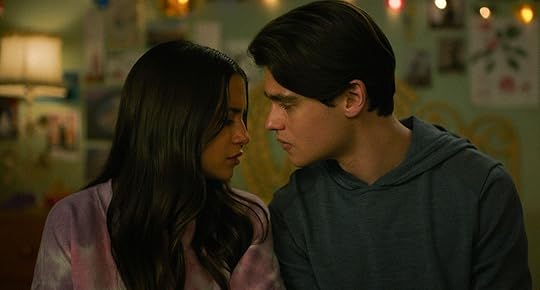 #6 – Turtles All the Way Down.
#6 – Turtles All the Way Down.
Based on John Green’s novel
Aza Holmes (Isabela Merced) is a teenager living with OCD who reconnects with her childhood crush, Davis (Felix Mallard). Their romance is messy, tender, and at times awkwardly funny, just like real first love.
Why it works: This isn’t a glossy rom-com filled with grand gestures; it’s quiet and authentic. The humour comes in small doses, moments of levity between Aza’s spirals, that remind us romance doesn’t have to be perfect to be meaningful.
The rom-com element it nails: Authenticity. The film leans into imperfections, showing that love can exist alongside struggle. The laughs may be softer, but they’re no less important.
Lesson for writers: Realness resonates. Don’t be afraid to let your characters be vulnerable, flawed, or messy. Comedy can come from honesty as much as from hijinks.
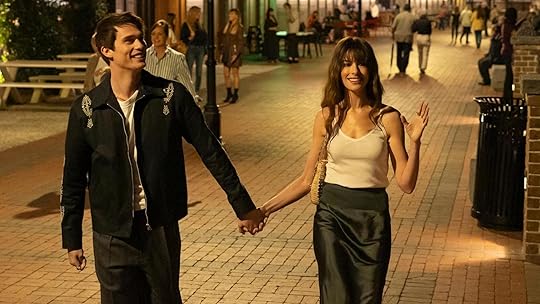 #7 – The Idea of You.
#7 – The Idea of You.
Based on Robinne Lee’s novel.
Anne Hathaway as Solène, a sophisticated 40-year-old single mom, falling for Hayes (Nicholas Galitzine), a much younger boy band star?
On paper, it sounds like pure tabloid fodder. On screen, it’s surprisingly smart, funny, and deeply romantic.
Why it works: This film could’ve leaned on clichés but instead grounds itself in emotional truth. Hathaway plays Solène with warmth and wit, while Galitzine’s Hayes feels both magnetic and vulnerable. The comedy comes from the absurdity of their worlds colliding, but the story digs deeper into themes of agency, desire, and societal judgment.
The rom-com element it nails: Breaking expectations. By centring a mature heroine and exploring an unconventional age-gap romance, the film pushes the rom-com into new, refreshing territory.
Lesson for writers: Don’t box yourself in. Rom-coms don’t have to be about twentysomethings meeting cute in coffee shops. Bold premises and layered conflicts can breathe new life into a familiar genre.
From the glittering spectacle of Crazy Rich Asians to the slow-burn ache of Love, Rosie, and the raw honesty of Turtles All the Way Down, these adaptations prove rom-coms aren’t one-size-fits-all. They can be big or small, silly or serious, sweet or bittersweet. What matters is that they make us laugh, make us care, and remind us that love is as complicated as it is joyful.
For writers, the lessons are clear:
Embrace tropes, but twist them.Let humour soften heartbreak.Make supporting characters earn their place.Play with timing to build tension. And don’t shy away from authenticity or depth.Because at the end of the day, love is awkward, unpredictable, and often ridiculous, and that’s precisely why we’ll always want to watch two people fumble their way toward it, whether on the page or the screen.
Now it’s YOUR turn – Which rom-com adaptation is your favourite?
Would love to get your input in the comment box below.
The post 7 Rom-Com Adaptations We Love. appeared first on Vered Neta.
September 7, 2025
How Symbolism Shapes Modern Narratives.
Picture this: You’re watching a movie, or reading a book, and suddenly…bam! There’s something in the background, a minor detail, a subtle hint that makes you go, “Wait a second, what’s that all about?”
Maybe it’s a colour, an object, or even an eerie silence. That, my friend, is symbolism at work, quietly doing its thing, deepening the story and giving you all the feels.
Symbolism isn’t just a cool trick up a writer or director’s sleeve. It’s the magic dust that makes a story sparkle and stick with you long after you’ve turned off the TV or closed the book. While everyone talks about colour, nature, and objects as symbols (and for good reason), let’s dive into some fresh ways symbolism is popping up in movies and books over the last 10-15 years.
Ready for a wild ride through the world of hidden meanings? Here we go!
5 Ways Symbolism Transforms Modern Storytelling.

#1 – Techy Symbols: Are We More Human or More Alien?
We’re living in a digital world, right? Social media, A.I., virtual realities… it’s all around us. So it’s no surprise that technology has become the ultimate symbol in recent stories.
In the hands of creative geniuses, tech isn’t just a tool, it’s a reflection of who we are, or maybe who we’re becoming.
Take “Ex Machina”, it’s more than just a slick sci-fi flick. The AI, Ava, is this cold, calculating, gorgeous machine. But symbolically? Ava is both the pinnacle of human achievement and a terrifying glimpse into a world where technology no longer needs us. She’s a reminder that in our quest to be the smartest species, we might end up creating something that makes us feel… well, obsolete.
And in “Black Mirror” (a whole series packed with tech symbolism), things get even crazier. In the episode “Nosedive”, social media ratings take over people’s lives, think of it as Instagram on steroids.
Your value as a person? It’s based on how many likes you get. It’s hilarious, it’s terrifying, and it’s definitely a symbol for how obsessed we’ve become with online approval and validation. It’s not just about tech, it’s about what tech is doing to our humanity
 #2 – Cities: The Concrete Jungle Inside Our Heads.
#2 – Cities: The Concrete Jungle Inside Our Heads.
We often think of cities as just… cities. But in modern stories, urban landscapes have become totally symbolic. The hustle and bustle of skyscrapers, the neon lights, and the endless noise, what if they represent our own mental chaos?
Welcome to the world of symbolism in city settings, where the concrete jungle mirrors emotional turbulence, growth, and everything in between.
“Blade Runner 2049” is a prime example. The sprawling, bleak, neon-lit Los Angeles isn’t just a setting; it’s a visual metaphor for the internal conflict of the main character, K.
The city is decaying, polluted, and lifeless, just like K’s perception of his own identity. The more he digs into his personal journey, the more the city’s dark and lonely vibe feels like a reflection of his inner turmoil. Cities can represent isolation, moral decay, or even hope, depending on how the story wants to spin it!
Then there’s “The Dark Knight”, where Gotham City is like this wild mix of a pressure cooker and a moral battleground. The city’s crime-ridden streets and towering buildings aren’t just cool backdrops, they show the moral chaos and power struggles of the characters, especially Batman and the Joker.
Gotham isn’t just Gotham; it’s a living, breathing symbol of the choices we make when faced with evil.
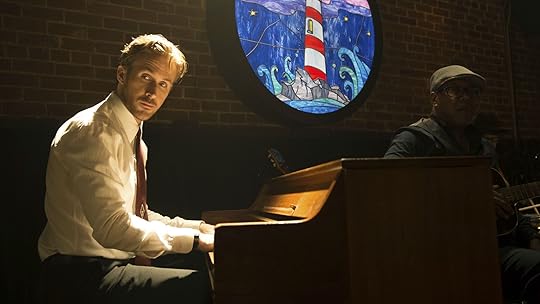
#3 – Music and Sound: Not Just for Background Vibes.
You know how the right soundtrack can turn an ordinary scene into something extraordinary? Music and sound have long been used to set the emotional tone of a scene, think triumphant orchestras for battle scenes or soft piano for tender moments.
But modern filmmakers and storytellers are taking it to a whole new level, using sound not just to accompany the action, but to symbolise the emotional core of the story itself. It’s like the music becomes a secret character, guiding you through the character’s psyche.
Let’s start with “La La Land”, a movie that’s all about the highs and lows of following your dreams and finding love. But the music isn’t just there to make you want to dance; it’s deeply symbolic of the emotional arc of the characters.
Take, for example, the jazz Sebastian plays in his club. It’s not just a musical style; it symbolises his personal struggle to keep his artistic integrity in a world that’s constantly pulling him in other directions. As the movie progresses, the music reflects the tension between his relationship with Mia and his dreams.
The soaring, bold scores during their moments of joy contrast with the sombre, more reflective tones when they face tough decisions. It’s as if the music is saying, “These are the emotions you can’t express in words.”
In “Her”, music is used even more subtly but with just as much impact. The soft, ambient soundtracks are like an emotional map for Theodore’s journey. At the beginning, the music feels a little distant, mirroring Theodore’s loneliness and emotional detachment.
But as he grows closer to the AI, Samantha, and opens up to his own feelings, the music shifts in tone, softer, more intimate, and, dare I say, more hopeful. The way music swells and recedes tracks his internal transformation, making us feel exactly what he’s going through without a single word being spoken.
Music and sound, when used in this symbolic way, can dig deeper than any dialogue could. They help us understand the emotional undercurrents of a story, filling in the gaps between what the characters say and what they truly feel. Whether it’s the melancholy tones of a jazz piano, the ambient whispers of an electronic score, or the silence that speaks volumes, these elements give modern stories an emotional depth that resonates long after the credits roll.
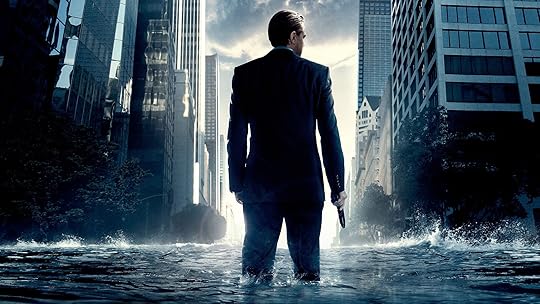
#4 – Memory and Time: When Time Bends and Memory Gets Messy.
Here’s something we all can relate to: how time feels is not always how it works. Time flies when you’re having fun and drags when you’re stuck in a waiting room. And when it comes to memory, well, that’s even trickier.
Have you ever tried to recall a moment, only to realise that your memory of it is a little hazy, or even entirely different from someone else’s recollection?
Time and memory aren’t just tools for storytelling; they are symbols that shape the entire emotional experience of modern films and books.
“Inception” plays with the very fabric of time. Dream worlds don’t obey the rules of reality, which is exactly why they make such a powerful metaphor for the human psyche. In the dream layers, time stretches and bends; what feels like hours in a dream can pass in mere minutes in the real world.
This manipulation of time isn’t just a narrative device; it’s symbolic of how memory and perception work.
Just like in dreams, our memories can become distorted or out of order, and our perception of time often has nothing to do with what actually happened. The deeper Cobb and his team go into the dream layers, the more the boundaries between past and present, reality and illusion, blur.
The movie challenges us to think about how we construct our memories and what they say about who we are.
In “Eternal Sunshine of the Spotless Mind”, time and memory are central to the story’s emotional impact. The entire plot revolves around the process of erasing memories of a failed relationship, but here’s the catch: the more the characters try to forget, the more they realise they want to remember.
The movie shows us that even painful memories are part of who we are. Time, in this case, isn’t linear. It’s messy and fragmented, just like the way we experience life. The film uses the erasure of memories to symbolically represent how we often try to rid ourselves of the pain of the past, but in doing so, we lose the lessons and emotional growth that come with those memories.
The beauty of these films is how they use time and memory to symbolise the human struggle with regret, identity, and acceptance.
Both “Inception” and “Eternal Sunshine” ask profound questions: What is the cost of revisiting painful memories? What does time really mean in the context of our lives? By manipulating time and memory in such creative ways, these stories tap into universal emotions, helping us connect with the characters on a much deeper, more visceral level.
These symbolic explorations of memory and time serve as reminders that life itself isn’t always neat and tidy. Our memories shape us in ways we might not even realise, and time, well, it’s a lot less dependable than we think.

#5 – Silence: The Unsung Symbol.
In a world that never stops talking, silence can say a lot. When used strategically in stories, silence becomes a potent symbol of tension, isolation, or reflection. It’s not just about being quiet, it’s about what’s left unsaid, what’s unheard.
In “A Quiet Place”, the need for silence isn’t just about survival from monsters (although, you know, that’s a big part of it).
It symbolises the emotional restraint and trauma the characters have experienced. It’s also a reminder of how we communicate with each other when words aren’t enough. Silence becomes a symbol of loss, love, and the strength to protect.
In “The Artist”, the transition from silent films to talkies is symbolic of the fear of obsolescence.
The characters must adapt to a changing world, and the silence in the early part of the movie symbolises the protagonist’s growing isolation and the struggle to find his place in a world that’s moving forward without him
Wrapping It Up: Symbolism is the Secret Sauce!
And there you have it, symbolism isn’t just for deep thinkers or literary nerds; it’s the secret sauce that takes a good story and turns it into something unforgettable. Whether it’s through technology that reflects our anxieties about the future, urban landscapes that mirror emotional chaos, or music and sound becoming the unsung heroes of a film’s emotional depth, modern stories are packed with symbolism that enriches every single frame or sentence.
The brilliance of symbolism lies in its subtlety. It’s often there in the background, waiting for us to catch on and make the connection. When done right, symbolism doesn’t just tell you what’s happening, it helps you feel it, often on a deeper level. It challenges us to look beyond the surface, to interpret what’s unspoken, and to reflect on the emotional and philosophical currents that drive the story.
Next time you’re diving into a book or movie, try to tune in to the symbols at play. Whether it’s a piece of music that resonates with a character’s journey, a city that feels like the emotional state of its residents, or the manipulation of time that mirrors the complexity of human experience, these symbols are there for a reason.
And once you start noticing them, you’ll see how they make stories even richer, deeper, and more real. Now go ahead, grab that book, press play on that movie, and uncover the hidden gems that make stories truly come alive!
Now it’s YOUR turn – What’s a symbol in a story that’s stuck with you?
Would love to get your input in the comment box below.
The post How Symbolism Shapes Modern Narratives. appeared first on Vered Neta.
August 31, 2025
How to Write Suspense That Hooks Readers.
This summer, I decided to give myself a BHAG, yep, a Big Hairy Audacious Goal. And not just any BHAG: finishing my novel Crime Cleaners.
The seed for it was planted last year when I dared myself to write a TV pilot. The Universe (in its usual, not-so-subtle way) kept nudging me, whispering, “This idea is too good to stay tucked in a drawer.” So, I thought, why not expand it into a full-blown novel?
Of course, life being life, the manuscript never made it past the “dreaming about it in the shower” stage.
Fast-forward to June: with a little push from my mentor and a lot of coffee-fueled determination, I declared I would finish the book in three months. Three months! For someone who’s never written crime before.
(Yes, I know. What was I thinking?)
Which meant only one thing: a crash course in all things crime, thriller, and tension. Because if suspense is the lifeblood of a good mystery, I needed a transfusion.
And that’s when it hit me. You know that moment when you stay up way past bedtime, telling yourself just one more chapter, only to see the sunrise peeking through your blinds? That’s not an accident.
That’s suspense at work, engineered, brick by brick, by a writer who knows exactly how to twist the knife.
And over the last decade, storytellers have been upping the ante, blending timeless tricks with daring new techniques that keep us flipping pages (or binging episodes) like our lives depend on it.
Here are 7 tension-building techniques that’ll keep your story buzzing like a live wire.
7 Secrets to Take Your Plot from Tame to Tension-Filled.
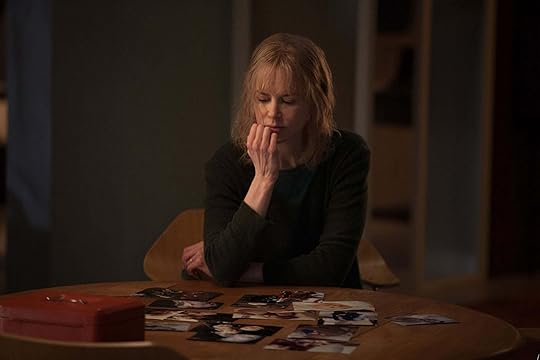
#1 – The Ticking Clock: Deadlines that Tighten the Screws.
There’s something about a ticking clock that makes us all squirm. Maybe it’s leftover exam anxiety, or the fact that most of us have raced to catch a train with seconds to spare, but the moment you add a deadline to a story, the tension shoots through the roof.
Time pressure doesn’t just speed things up; it makes every decision heavier, every mistake costlier. Characters can’t waffle when the sand in the hourglass is almost gone, they have to act, and usually under the worst possible circumstances.
The beauty of this trick is that it works on both big, explosive scales (the bomb goes off at midnight unless…) and on smaller, intimate ones (the truth has to come out before the wedding starts).
Either way, readers feel that same sweaty-palmed urgency. Our heartbeats start syncing with the countdown, and suddenly we’re racing right alongside the characters, praying they’ll make it, or morbidly curious if they won’t.
Take Before I Go to Sleep, with Nicole Kidman uses a chilling version of the ticking clock.
Christine, the protagonist, suffers from amnesia and wakes up every morning with no memory of her life.
Each day is essentially a reset button. The ticking clock here is brutal: she has only the span of a single day to piece together who she is, what’s happening around her, and who she can trust, before sleep erases it all.
That daily reset builds relentless tension, because every scrap of truth must be uncovered (and acted on) before the clock strikes midnight
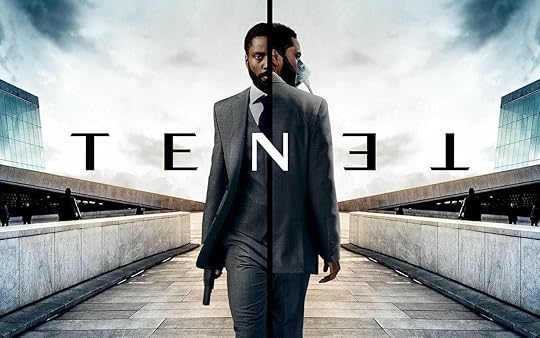 #2 – Suspense Objects: When an Item Carries the Weight of Fear.
#2 – Suspense Objects: When an Item Carries the Weight of Fear.
Sometimes it isn’t a villain lurking in the shadows or a bomb about to go off that ties our stomachs in knots; sometimes it’s an object.
A single, ordinary-looking item that quietly hums with danger because of what it represents. Think about it: a lipstick-stained glass, a bloodied shoe, a locked box no one dares to open.
These objects aren’t just props; they’re narrative landmines.
Why do they work so well? Because objects are deceptively static.
They just sit there, until suddenly, they don’t. The suspense isn’t only in the thing itself, but in the audience’s anticipation: who’s going to find it, when will it resurface, and what chaos will it unleash when it does?
That tension can simmer for pages or scenes, making the reveal all the more explosive.
Take Tenet, Christopher Nolan’s time-bending thriller. On the surface, the “inverted bullet” is nothing more than a hunk of lead. But when the Protagonist discovers bullets moving backwards through time, that object flips the rules of the entire story.
Suddenly, every stray bullet casing is loaded with dread, proof of a hidden war where cause and effect no longer apply. The audience leans in, waiting to see what the next encounter with one will mean: is it evidence, a warning, or the start of something catastrophic?
That’s the beauty of suspense objects: they may be silent, but they scream potential disaster.
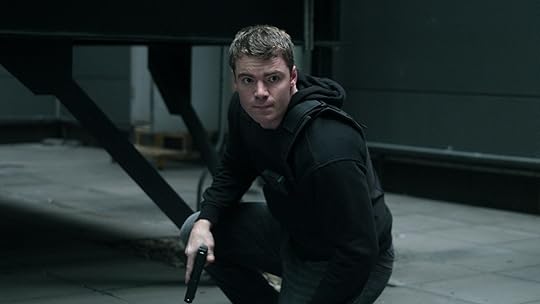
#3 – False Victories: Relief That Turns Sour.
There’s nothing juicier than watching characters and audiences believe they’ve triumphed, only to realise the story has sucker-punched them.
False victories deliver that gut-dropping whiplash: the relief evaporates, dread floods in, and suddenly the characters are worse off than before. Suspense thrives on these cruel reversals.
Writers love false victories because they toy with emotional rhythm.
A narrative can’t be all tension, all the time; we’d flatline. But letting readers exhale, only to pull the rug out, amplifies the next wave of panic tenfold. It’s the storytelling equivalent of “the call is coming from inside the house.”
Take The Night Agent. Peter believes he’s finally uncovered a trustworthy ally or solved a crucial piece of the conspiracy, and for a moment, we breathe alongside him. But almost instantly, betrayal slams the door shut. The person he trusted is compromised, or the apparent breakthrough leads straight into another trap.
Those false victories don’t just raise tension; they make us paranoid, scanning every new development with suspicion
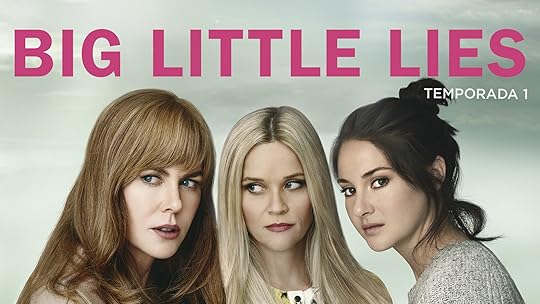
#4 – Multi-Perspective Suspense: Seeing Danger From All Sides.
One of the sharpest tools in a suspense writer’s kit is letting the audience peek behind multiple curtains.
When we follow more than one perspective, the story transforms into a dramatic irony playground. We know Character A is about to walk into Character B’s trap, and the dread is exquisite.
This technique is effective because it engages the reader as an active participant. Instead of passively waiting for reveals, we’re actively calculating the collision course. The tension doesn’t just live in what’s hidden; it thrives in the unbearable wait for two (or more) storylines to smash together.
Think of Big Little Lies. The story unfolds through multiple women’s perspectives, each adding new layers of secrecy, pain, and motive. We, the audience, are ahead of some characters but behind on others, always juggling truths and half-truths. By the time the infamous school fundraiser night arrives, the suspense is unbearable, not because of a single secret, but because we’ve been living in multiple conflicting truths, just waiting for the explosion.
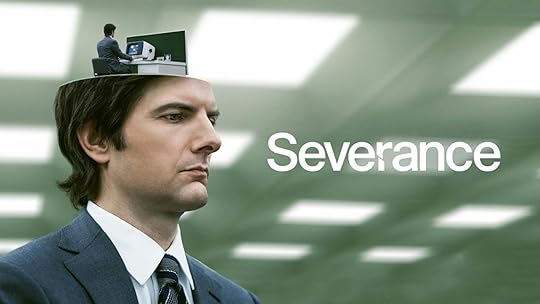
#5 – Cliffhangers with a Twist: The Art of the Cruel Cut.
Cliffhangers are the bread and butter of suspense, but the best storytellers don’t just slam the brakes mid-action…they add a twist of the knife.
A truly effective cliffhanger doesn’t merely delay resolution; it changes the question. Instead of “Will they survive?” it becomes “Wait… what just happened?”
Audiences adore (and hate) this because it creates double suspense: first, the immediate situation, then the brain itch of the new uncertainty. It’s why binge-watching exists. Who can stop when you’ve been served a revelation with no follow-up?
Case in point: Severance. The finale drops one of the most gasp-worthy cliffhangers of recent years: just as characters in the “innie” world manage to awaken in their “outie” lives and start unravelling their reality, the screen cuts to black. We don’t just wonder if they’ll succeed, we’re floored by the implications of what we’ve glimpsed. It’s suspense squared, the kind that keeps fans dissecting episodes for months.
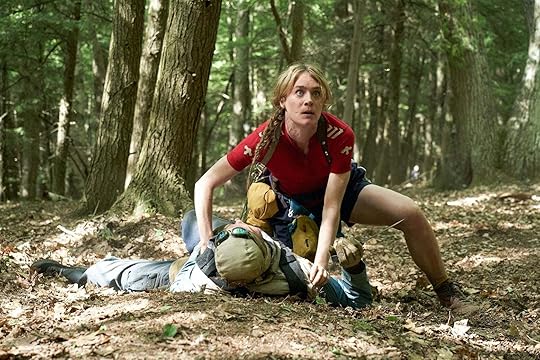 #6 – Unconventional Structures: Breaking Time to Build Tension.
#6 – Unconventional Structures: Breaking Time to Build Tension.
Sometimes suspense isn’t about what happens but how it’s told. Messing with structure, fractured timelines, looping narratives, and nested stories can leave audiences off-balance in the best way.
When we’re unsure of where we stand in time or truth, the act of piecing the story together becomes its own source of tension.
The magic of unconventional structures lies in their ability to mirror uncertainty. If a character is lost, traumatised, or desperately trying to make sense of the world, the form of the story itself can pull us into that experience. The suspense isn’t just in the plot; it’s baked into the storytelling fabric.
Take Station Eleven. Instead of a linear pandemic narrative, the series splinters across decades, weaving between pre-collapse life and the fragile communities built after. That non-linear approach forces viewers to hold fragmented knowledge, anticipating how different timelines will intersect. The suspense lives not only in survival, but in the haunting gaps between what we know and what hasn’t yet been revealed.
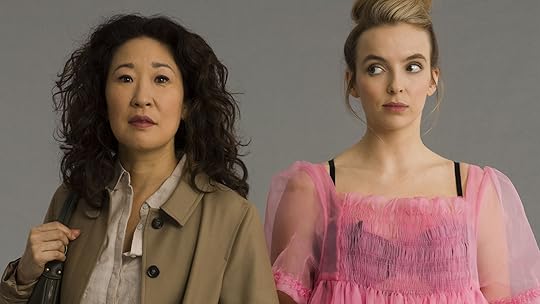
#7 – Wild Cards: The Character Who Blows It All Up.
If suspense thrives on uncertainty, then nothing is more deliciously destabilising than a wild card character.
These are the unpredictable players, the loose cannons, the tricksters, the ones whose motives are murky at best. With them in the mix, every scene hums with the question: “What will they do next?”
Wild cards keep tension alive because they prevent the narrative from becoming too neat. Just when you think you’ve mapped the trajectory, they zig where everyone else zags. Sometimes they’re allies, sometimes enemies, and often both within the same story beat.
Think of Villanelle in Killing Eve. As a brilliant but unhinged assassin, she transforms every encounter into a suspense bomb. Will she kill, seduce, vanish, or do something utterly bizarre? Her presence alone destabilises the narrative, ensuring that even the quietest moments hum with dread and anticipation.
Final Thoughts.Suspense isn’t about cheap jump scares or dangling readers over the edge of a cliff just for the thrill of it.
It’s about trust, the delicious pact between writer and audience that says, “I’m going to make you sweat, but I promise it will be worth it.”
Whether it’s a countdown clock, a haunting object, a false victory, or a wild card you didn’t see coming, these techniques all serve the same purpose: to keep the pages turning and the audience perched on the very edge of their seat.
And here’s the magic: suspense isn’t just for crime novels or high-octane thrillers. Romance, fantasy, literary fiction, even comedy, all of them can hum with tension if you know how to twist the screws just right. Suspense is less about genre, more about rhythm: stretching, tightening, and then releasing, like a storyteller’s heartbeat syncing with the reader’s.
Now it’s YOUR turn – What’s the most suspenseful story you’ve read or watched lately?
Would love to get your input in the comment box below.
The post How to Write Suspense That Hooks Readers. appeared first on Vered Neta.
August 24, 2025
Serious Laughs: Using Humour to Tell Powerful Stories.
Let’s be honest: sometimes the world feels like one big tragic mess…with traffic. Life throws wars, heartbreak, injustice, medical diagnoses, and family dinners at us, and just when we think we can’t take it anymore… someone cracks a joke.
And somehow, we feel better.
That’s the magical power of humour. And guess what? It works just as well in stories. Whether on the page or on the big screen, humour isn’t just the comic relief; it’s often the key to unlocking life’s most brutal truths.
In fact, humour is like a Trojan horse. It sneaks past our defences, carrying deep emotional payloads hidden inside a bellyful of jokes. When used well, it makes the unbearable bearable, the complex digestible, and the tragic somehow beautiful.
So let’s explore seven ways humour helps us tackle serious themes in writing and movies and peek at some brilliant examples that make us laugh, cry, and rethink everything in between.
7 Ways Writers Use Humor to Tackle Tough Topics.

#1 – Humour Makes the Unbearable Bearable.
Let’s start with the big one. Some themes, like war, genocide, or suicide, are so heavy that they risk sinking the entire story. That’s where humour floats in like a life raft.
Used sparingly and smartly, humour can create a breather, a pause button, or even a survival mechanism. It doesn’t erase the pain; it helps us stay in the room with it.
Look at Life is Beautiful . Yes, it’s an “oldie”, but it earns its spot. In this Oscar-winning gem, Roberto Benigni’s tells the story of a Jewish-Italian man who uses humour and imagination to shield his son from the horrors of a Nazi concentration camp. On paper, that sounds horrifying. How can you make jokes in a Holocaust film?
But Benigni doesn’t use humour to make light of genocide. He uses it to emphasise the resilience of the human spirit. His comedic approach makes the tragedy hit harder, not softer. It’s precisely because we laugh with the characters that we care so deeply when things take a tragic turn.
Or take The Midnight Library by Matt Haig. Who tells the story of a woman stuck in the fog of depression and lands in a magical library between life and death, she begins hopping through alternate versions of her life. Sounds grim? It kind of is. But Haig sprinkles just enough dry humour and clever dialogue to make the journey feel life-affirming rather than bleak.
 #2 – Humour Builds Connection with the Audience.
#2 – Humour Builds Connection with the Audience.
Let’s face it: nobody wants to be lectured.
We don’t want a morality play.
We want characters who feel real, flawed, funny, and full of contradictions.
Humour makes them likeable, even when the story is tackling themes like loss, trauma, or mental illness.
It’s like saying, “Hey, I get you,” with a wink.
A great example of this is Taika Waititi’s Jojo Rabbit, a satire about a 10-year-old boy in Nazi Germany whose imaginary friend is Adolf Hitler (played by Waititi himself, complete with a gloriously ridiculous moustache). That setup alone is enough to raise eyebrows.
But the humour here disarms the audience. We’re drawn into Jojo’s world, and as the absurdity gives way to heartbreak, the impact is devastating. The film sneaks empathy in through a side door, using jokes to build a bond between the viewer and the characters.
Or the book (later adapted to a movie), Where’d You Go, Bernadette by Maria Semple. Bernadette is brilliant, eccentric, socially allergic, and deeply troubled. But oh, she’s funny. Her sardonic tone and biting commentary make her instantly engaging. The story covers anxiety, isolation, and identity, but we’re too busy chuckling to notice we’ve stumbled into something profound.

#3 – Humour Exposes Hypocrisy and Absurdity.
Sometimes the world is just… ridiculous. And satire is the best way to call out the madness.
Humour here doesn’t lighten the blow…
it delivers it. By exaggerating real-life absurdities, stories shine a spotlight on what’s broken, from political systems to social norms.
Just watch Don’t Look Up, where scientists discover a comet is about to destroy Earth. Great. So they tell the world.
The world… shrugs. Welcome to a scathing satire of climate denial, celebrity culture, and the 24-hour news cycle. It’s outrageous, hilarious, and terrifying because it feels just a bit too real.
Or read My Sister, the Serial Killer by Oyinkan Braithwaite, where Korede keeps cleaning up after her little sister’s murders. Like, literally. This Nigerian noir novel uses deadpan humour to slice into gender roles, family dynamics, and systemic injustice. The absurdity makes you laugh, until you realise how plausible it all feels.

#4 – Humour Reveals the Humanity in Tragedy.
In real life, people joke at funerals. They laugh in waiting rooms. Gallows humour is how many of us stay sane. So when fictional characters face dark times with a sense of humour, it doesn’t break the mood; it grounds it.
Because people are weird. And weird is wonderful.
Take Fleabag. Phoebe Waller-Bridge’s creation is raw, reckless, and razor-sharp. She’s grieving and spiralling, but instead of melodrama, we get deadpan looks to the camera, brutally honest monologues, and inappropriate jokes. It’s hilarious. It’s heartbreaking. It’s life.
Another favourite of mine is The Rosie Project by Graeme Simsion. Don Tillman, a brilliant but socially awkward genetics professor, sets out to find a wife using a scientifically rigorous questionnaire. What unfolds is a surprisingly tender story about neurodivergence, emotional isolation, and learning to love without scripts.
The humour, quirky, deadpan, and sometimes unintentional, makes Don’s inner world accessible and deeply human. You laugh with him, and through that laughter, you start to see the tragedy of someone trying so hard to connect in a world that doesn’t quite get him.
[image error]
#5 – Humour Encourages Reflection Without Defensiveness.
If you want people to rethink their worldview, humour is your secret weapon. No soapboxes. No finger-wagging. Just jokes that sneak truth past people’s defences. Humour invites readers and viewers to laugh first… and think later.
The Menu explores a pretentious, high-end dinner that turns into a delicious takedown of elitism, class warfare, and the commodification of art. It’s tense. It’s gory. It’s hilarious. And somehow, amid the chaos, you’ll start questioning why we put certain people, and particular tastes, on pedestals.
The satirical novel The Sellout by Paul Beatty doesn’t ask politely for your attention; it grabs it and dunks it in biting wit. Beatty tackles race, politics, and historical trauma with such outrageous humour that you can’t look away. You laugh, you cringe, and then you go back and read it again because… damn.
 #6 – Humour Enhances the Impact of the Tragic.
#6 – Humour Enhances the Impact of the Tragic.
Here’s the emotional one-two punch: make us laugh, then make us cry. That emotional whiplash can leave a bigger impact than either emotion alone. When we care about characters because they made us laugh, their pain hits harder.
One of my favourite examples is About Time. On the surface, it’s a charming rom-com about a man who can time-travel.
But as the story unfolds, it becomes a deeply emotional meditation on love, loss, and the fleeting nature of life. The film is full of playful British humour, awkward dinner scenes, time-travel mishaps, and self-deprecating narration, but by the end, it breaks your heart in the gentlest, most beautiful way.
The humour makes you feel safe, and then…bam, it teaches you to cherish the ordinary moments that slip by unnoticed.
Or the excellent book A Man Called Ove by Fredrik Backman. Ove is grumpy, suicidal, and not exactly cuddly. But he’s also a magnet for chaos: stray cats, clueless neighbours, runaway trailers. The humour makes us root for him… which makes his backstory and slow emotional thaw incredibly moving

#7 -Humour Reflects How People Cope in Real Life.
If you’ve ever laughed at a wildly inappropriate moment, congratulations…you’re human.
Humour isn’t just entertainment. It’s a coping mechanism, a shield, a pressure valve. And great stories reflect that truth.
Just look at The Big Sick. Based on Kumail Nanjiani’s real-life love story, this rom-com tackles illness, culture clash, and heartbreak with jokes…Lots of them.
From awkward parents to failed stand-up gigs, the humour makes the love story authentic. Because love isn’t always poetic, it’s often messy and funny and real.
Another great example is Eleanor Oliphant Is Completely Fine by Gail Honeyman.
Eleanor has strict routines, no friends, and no filter. Her trauma is deep, but her voice is hilariously blunt.
The dry humour doesn’t mask the pain—it reveals it. And we love her all the more because she makes us laugh in spite of it all.
There’s a myth that serious themes require solemn storytelling. That humour somehow cheapens tragedy, dilutes truth, or distracts from depth.
But the opposite is often true.
Humour is one of the oldest tools humans have for processing the unprocessable. It gives us courage. It makes bitter truths easier to swallow. It builds connection, fosters reflection, and reminds us of our shared humanity.
Whether it’s a sarcastic protagonist deflecting pain, a biting satire revealing societal absurdity, or a laugh in the midst of heartbreak, humour invites us to engage with stories we might otherwise avoid.
So go ahead. Write that dark comedy. Pen that witty tragicomedy. Add a joke to your trauma narrative. Life is messy, and sometimes the best way to get through it is to laugh.
Now it’s YOUR turn – What story made you laugh and cry at the same time?
Would love to get your input in the comment box below.
The post Serious Laughs: Using Humour to Tell Powerful Stories. appeared first on Vered Neta.
August 17, 2025
Telling Diverse Stories With Empathy.
Let me share a little secret about my novel, “Full Circle”. It didn’t start out as a story about Prague or the Russian invasion. Nope. My original idea was a tale about race and the bonds of friendship.
The big question behind it all? “Can Black and white people be true friends without race getting in the way?”
The book was going to bounce between Birmingham, Alabama, in 2014, and Prague in 1968. In both places, one character would be on the receiving end of racism. Not the in-your-face kind, but the quiet, paper-cut kind. The kind that stings more because it’s subtle, daily, and often brushed aside. I even toyed with calling it Small Cuts. Clever, right?
Then came my beta readers. Wonderful, honest humans who gently pointed out: “This isn’t your story to tell.” And they were right. While I could research and empathise all day long, I couldn’t authentically capture the lived experience of a Black American facing systemic racism. So I zoomed in on the story I could tell truthfully, the one in Prague, centred on a Jewish student during the Russian invasion. That story became “Full Circle”, and the entire journey raised a burning question:
How do we respectfully write stories set in cultures that aren’t our own?Grab your metaphorical passport, friends, because we’re going on a journey through the wonderful, messy terrain of cross-cultural storytelling.
Culture Is a Mosaic, Not a Monolith. Here’s the thing: Writers are curious creatures. We’re drawn to the unfamiliar, the unknown, the stories that live beyond our picket fences. Writing across cultures is one of the most powerful tools we have to build empathy. But let’s be real…it’s also a minefield. One wrong step and boom: you’ve exoticised, stereotyped, or flat-out offended.
In today’s hyper-aware world, audiences are paying attention. And that’s a good thing. It means we’re being held to higher standards. No more “Well, I meant well…” as a free pass.
So, how do we do it right? What does respectful representation actually look like?
7 Steps to Writing Diverse Stories Well.

Step One: Remember Why Representation Matters
(And No, It’s Not About Diversity Bingo).
Representation isn’t just about variety. It’s about validity. Seeing your story, or something close to it, in a book or on screen sends the message: “You exist. You matter.”
But when all we see are stereotypes: the wise old Asian, the spicy Latina, the Arab terrorist, the greedy Jew, it tells a different story: “You’re a type, not a person.”
Take Americanah by Chimamanda Ngozi Adichie. Through the eyes of Nigerian protagonist Ifemelu, we explore identity, race, and immigration in both Nigeria and America. It’s a story rich in specificity, but that’s what makes it universal. You don’t need to be Nigerian to relate to feeling like an outsider or questioning who you are in a new place.
By the way, check her TED talk about The danger of a single story… absolutely brilliant.
In a nutshell, great representation deepens the world for everyone.
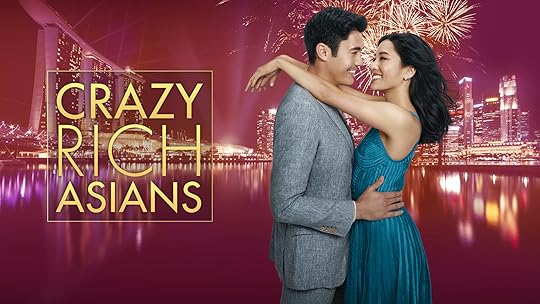 Step Two: Research Like You Mean It.
Step Two: Research Like You Mean It.
Can you write about a culture that isn’t yours? Yes.
Should you? That depends. But if you decide to take the plunge, do your homework.
Lazy writing is where the wheels come off. Google alone won’t cut it. You need to read books, watch documentaries, talk to people, and spend time in that culture’s spaces if possible. Better yet, work with cultural consultants.
Consider Crazy Rich Asians by Kevin Kwan. It’s dripping with details: food, family dynamics, Singlish expressions that make the Singaporean-Chinese world come alive. Why? Because Kwan knows that world inside and out. Authenticity is in the texture.
Now contrast that with The Great Wall, a fantasy flick featuring Matt Damon as the hero who saves ancient China. Beautiful visuals, but culturally tone-deaf. It transformed a sweeping legend into another “white saviour” saga. Big yikes.
Moral of the story? If you’re going to step into someone else’s cultural shoes, don’t just try them on for a scene. Live in them for a while.
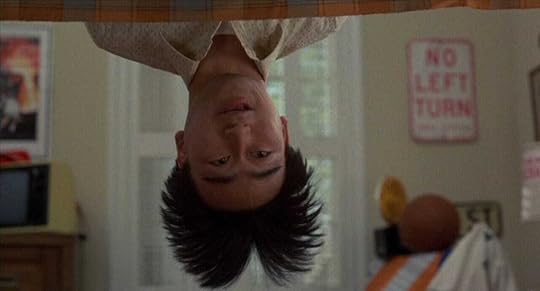
Step Three: Stereotypes Are Easy. Nuance Takes Guts.
We all have mental shortcuts about cultures, some harmless, many not. The key to writing across cultures is pushing past the stereotypes.
Take Everything I Never Told You by Celeste Ng. It tells the story of a mixed-race Chinese-American family in 1970s Ohio.
Ng doesn’t hammer you over the head with race talk. Instead, it weaves into the characters’ daily lives: the father’s discomfort with his identity, the mother’s broken dreams, the kids’ struggle to fit in. It’s a story first, race included, not a story about race.
Now, remember Sixteen Candles? The infamous Long Duk Dong character? A cringey caricature complete with gongs and broken English. It didn’t age well because it was never respectful to begin with.
Good writing resists flattening people. It goes deeper.
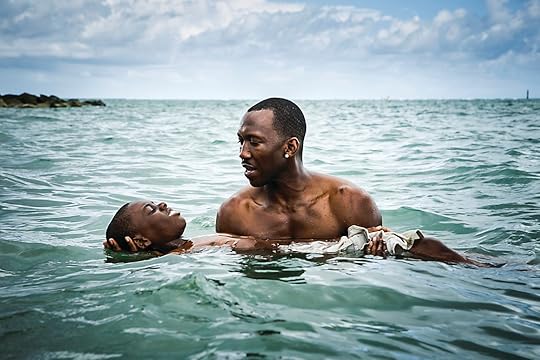
Step Four: Ask Yourself, “Whose Story Is This, Really?” .
Here’s the spicy bit: Just because you can write a story doesn’t mean you should.
Jeanine Cummins’ American Dirt attempted
to tell a powerful migrant story about a Mexican woman fleeing cartel violence.
The problem? Many Latinx readers found the book riddled with stereotypes, factual errors, and a tone that felt more like trauma tourism than empathy.
Compare that with Moonlight, directed by Barry Jenkins. While it isn’t cross-cultural in the traditional sense, it’s a perfect example of a filmmaker telling a story from within his community. The result? A nuanced, quiet masterpiece that resonates far beyond the Black queer experience it portrays.
So ask yourself: Why am I telling this story? Do I bring lived experience, deep knowledge, or genuine curiosity? Or am I just chasing a trend?
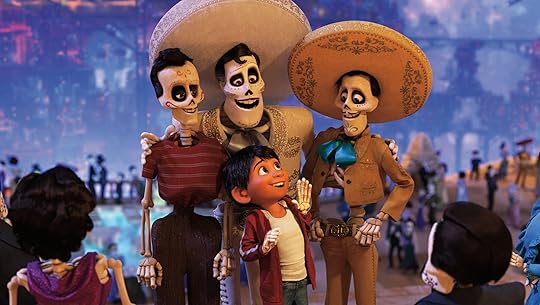
Step Five: Collaborate, Don’t Colonise.
You don’t have to do it alone. In fact, you shouldn’t.
Look at Pixar’s Coco. While the creators weren’t Mexican, they collaborated with cultural advisors, travelled through Mexico, talked to families, and listened.
The result? A film that Mexican and Latinx audiences overwhelmingly embraced.
Compare that to Disney’s Pocahontas.
Pretty visuals, but riddled with historical inaccuracies and romanticised colonisation. The difference? Coco collaborated. Pocahontas assumed.
Invite people into your process, not as checkboxes, but as co-creators. Authenticity is a team sport.
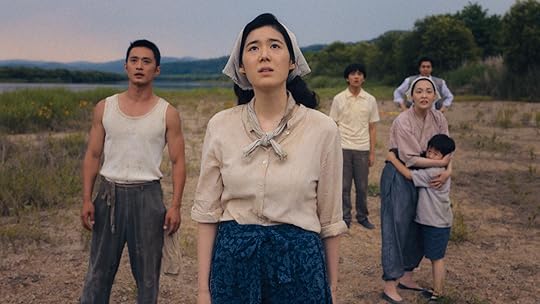 Step Six: Sweat the Small Stuff.
Step Six: Sweat the Small Stuff.
Names, slang, gestures, meals, clothing, these aren’t just decorative. They’re loaded with meaning.
In Pachinko by Min Jin Lee, the details are stunning. Korean names, honorifics, historical tensions, family customs, they’re all woven in with care. Lee spent years researching. It shows.
On the flip side, we’ve all seen movies where characters wear the wrong traditional outfit or say something so off that it pulls you right out of the story. (Looking at you, Hollywood wardrobe departments that confuse cheongsam with hanbok.)
If your Indian character eats beef or your Nigerian one casually says “cheerio,” it’s not quirky. It’s sloppy.
Details either build your world or unravel it. Choose wisely.
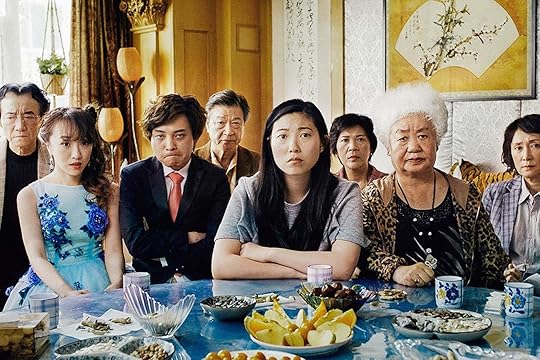
Step Seven: Support Own Voices.
Here’s some good news: the tide is turning. The publishing and film industries are finally giving more space to Own Voices storytellers, those telling stories from within their communities.
Books like Angie Thomas’ The Hate U Give or Ocean Vuong’s On Earth We’re Briefly Gorgeous couldn’t have been written from the outside. They ring with emotional truth.
Lulu Wang’s The Farewell is another gem. Based on her own family experience, it tells the story of a Chinese-American woman grappling with cultural clashes and a family secret. It’s funny, poignant, and feels utterly lived-in.
Writing across cultures isn’t off-limits. But it also isn’t a free-for-all. Sometimes, the most respectful thing you can do is amplify someone else’s voice instead of speaking over it.
So, What’s the Bottom Line?Writing across cultures isn’t about walking on eggshells. It’s about writing with care. About asking: “What do I owe the people I’m writing about?”
The answer? Curiosity. Humility. Honesty. And above all, respect.
When you get it right, your story doesn’t just work; it resonates. Because the best stories don’t divide us by what makes us different, they connect us through what makes us human.
So go ahead, explore the world with your pen. Just bring your empathy, your map, and maybe a trusted travel guide or two.
And remember: if you’re going to write in someone else’s house, at least take your shoes off at the door.
Now it’s YOUR turn – What story got cross-cultural representation just right for you?
Would love to get your input in the comment box below.
The post Telling Diverse Stories With Empathy. appeared first on Vered Neta.
August 10, 2025
Why Writing Historical Fiction Is a Modern-Day Challenge.
Okay, let’s get this out of the way: I absolutely love history. There, I said it.
If you’re anything like me, there’s just something magical about time travel, right?
But, instead of hopping into a DeLorean, I take the long way around, by writing historical fiction.
(Yes, Full Circle, that’s my plug, thank you very much.)
However, before I get too carried away, let me tell you: writing historical fiction today is not all candlelit quills and majestic castles. Oh no, folks. It’s a whole lot more complicated than that. Over the years, I’ve written about the common pitfalls of historical fiction, but today, let’s dig deeper into the real challenges of writing historical novels in our modern world.
Historical fiction is like a tightrope walk: on one hand, you’ve got historical accuracy, and on the other, you’ve got the delicate art of storytelling. You must pay homage to the past but keep the plot exciting enough so readers don’t snooze off. But in today’s world, shaped by social media, instant information, and very vocal readers, writing a historical novel comes with its own set of modern-day challenges. Let’s dive into them, shall we?
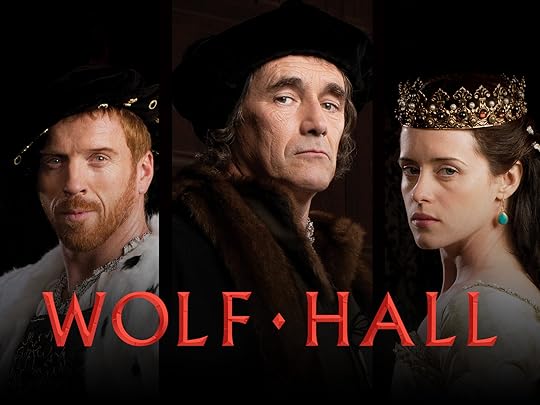
#1 -The Eternal Tug-of-War:
Accuracy vs. Storytelling.
Picture this: you’re in the middle of writing a book about the Tudors (because, who doesn’t love a good Tudor drama?) and you find yourself wondering, “Should I have Thomas Cromwell say that? Is it historically accurate?”
In historical fiction, this kind of debate happens all the time. And let me tell you, finding that sweet spot between staying true to history and creating a compelling narrative is tricky business.
The crux of the challenge is this: while accuracy is necessary, a story needs to move.
Sure, the political climate of 16th-century England may have been heavy on pomp and politics, but let’s be honest, most readers want characters who feel real. You can’t just drop a bunch of historical facts and call it a day.
Let’s talk about Hilary Mantel’s Wolf Hall trilogy. The Wolf Hall series is a prime example of this struggle. Mantel’s portrayal of Thomas Cromwell is incredibly nuanced and researched, but she also takes creative liberties to bring Cromwell to life as a protagonist.
And that’s where the fun lies; if you’re writing historical fiction, you get to explore “what-ifs” and humanise historical figures. In the case of Cromwell, Mantel goes against the grain of the villainous figure typically portrayed, giving us someone who is deeply layered, both cunning and empathetic.
Mantel herself admits the challenge: “You must have facts, but they must be the right kind of facts,” she said. “And between the facts, the creative imagination must make its leap.” Yes! That leap is exactly what makes historical fiction thrilling. You have to trust that your research serves the story, not the other way around.
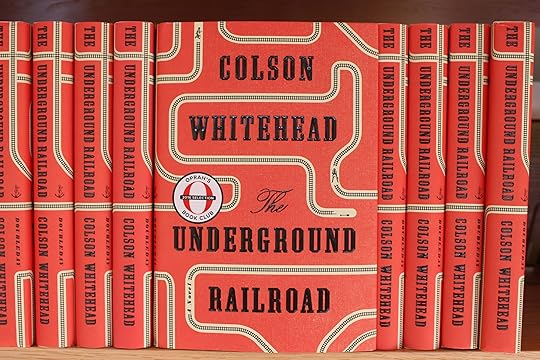 #2 – Modern Sensibilities vs. Historical Realities (Spoiler: History is a Bit Messy).
#2 – Modern Sensibilities vs. Historical Realities (Spoiler: History is a Bit Messy).
You know how sometimes when you’re watching an old movie and someone says something that feels… off by today’s standards? (Looking at you, 1950s ads). It’s kind of the same with historical fiction.
The past was complicated, and not always pretty. So, when you’re writing about issues like race, gender, or colonialism, you run into the dilemma of presenting past attitudes without endorsing them or alienating modern readers. It’s a tough line to walk.
Colson Whitehead’s The Underground Railroad does this beautifully. Whitehead doesn’t just write about slavery in a historical context; he reimagines the Underground Railroad as an actual, literal train system, talk about a metaphor coming to life! This speculative twist allows Whitehead to explore the horrific realities of slavery and the emotional toll it took on enslaved people without having to be slavishly (pun intended) tied to historical realism.
What makes The Underground Railroad so remarkable is how it captures the trauma and the stakes of slavery, while still feeling relevant to today’s readers. Whitehead’s novel forces us to confront the past, yes, but through a lens that makes us feel the urgency of history’s echoes in the present. His approach raises a big question: Is it necessary to stick too closely to historical realism in historical fiction? Can we give ourselves permission to invent and reimagine while staying true to the truth?
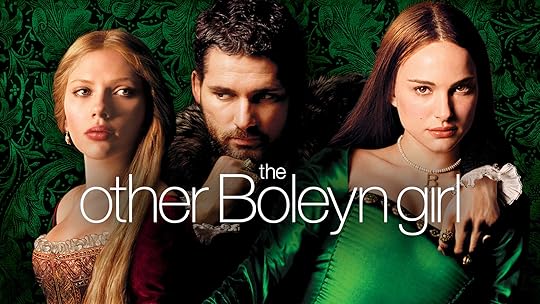
#3 -Information Overload: A Curse or a Blessing?
Let’s face it, we live in an age where information is literally at our fingertips. We can Google anything. I mean, I can fact-check historical quotes while I’m having coffee, instant accuracy!
But, here’s the catch: the internet has made historical research both easier and more dangerous.
One wrong fact, one misspelt name, and boom, social media is ready to roast you like a marshmallow at a campfire.
Take Philippa Gregory, for example. Her novels about the English royal family (you know, The Other Boleyn Girl and The White Queen) have received mixed reactions from historians and readers alike.
Some of her liberties with the historical record have sparked controversy, especially when she portrays figures like Anne Boleyn or Elizabeth Woodville in ways that don’t necessarily match up with mainstream historical views.
Now, Gregory herself defends her work by pointing out that historical fiction is… well, fiction.
But when you’re writing about a historical figure, modern readers will expect accuracy.
When the history buffs and the casual readers start throwing shade, it’s clear that the stakes are high in today’s world.
To handle this, many authors now include extensive author’s notes, bibliographies, and sources.
They let readers know how they arrived at their conclusions and which liberties they’ve taken, because, let’s be real, it’s better to be transparent than to face a Twitter storm, right?
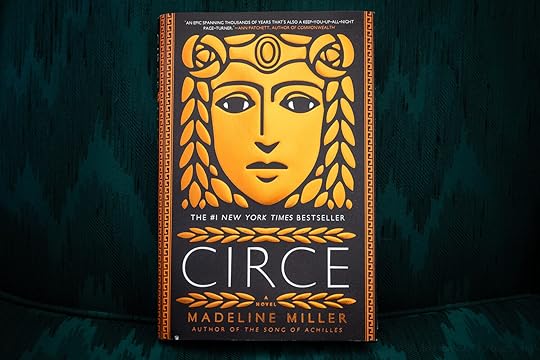
#4 -Writing from Marginalised Perspectives: The Power of Voice .
The days when historical fiction simply rehashed the stories of the rich, white, and powerful are over. Today’s readers want fresh perspectives, especially from marginalised communities that have been overlooked in traditional historical narratives.
As authors, we’re tasked with representing these voices, but we have to do so thoughtfully and responsibly.
Madeline Miller’s Circe brings the ancient Greek mythological character of Circe into a whole new light. Instead of portraying her as the evil witch from Homer’s Odyssey, Miller gives Circe depth, agency, and humanity. This reimagining shifts the narrative focus to a marginalised female character, which aligns with modern feminist ideals—an excellent example of how to revise classical stories to speak to today’s audience.
But, as with any retelling, there’s a fine line to walk. As readers become increasingly sensitive to cultural appropriation and authenticity, authors must tread carefully when telling stories that fall outside their own lived experiences. It’s essential to avoid falling into the trap of writing “at” a culture rather than “with” it.
When dealing with traumatic histories or cultures not your own, there’s an added responsibility to approach these stories with empathy and respect.
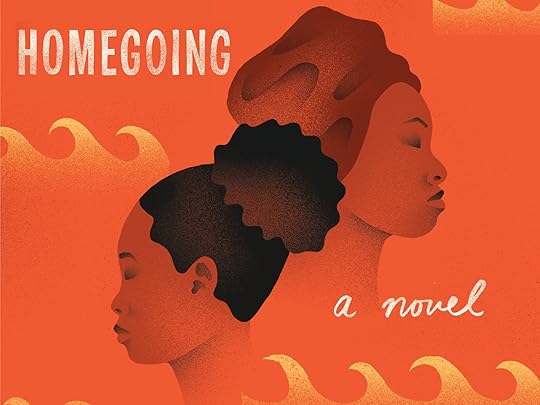
#5 -Filling in the Historical Gaps: What’s Not in the Record .
Let’s talk about one of the biggest challenges in historical fiction: what’s missing. History has often been recorded by those in power, and as a result, the voices of the oppressed or marginalised have been erased, silenced, or misrepresented.
So, when writing about these gaps, authors are faced with the task of respectfully imagining untold stories without inventing history out of thin air.
Yaa Gyasi’s Homegoing is a brilliant exploration of the untold histories of the transatlantic slave trade.
Gyasi traces the descendants of two half-sisters from Ghana, one who is sold into slavery, and the other married to a British coloniser.
The novel spans multiple generations and countries, illuminating how the scars of slavery ripple through time. What Gyasi does so beautifully is fill in the gaps in the historical record while acknowledging the limitations of what can be known. She doesn’t claim to speak for the people whose stories have been lost, she simply gives them a narrative space in which to exist.
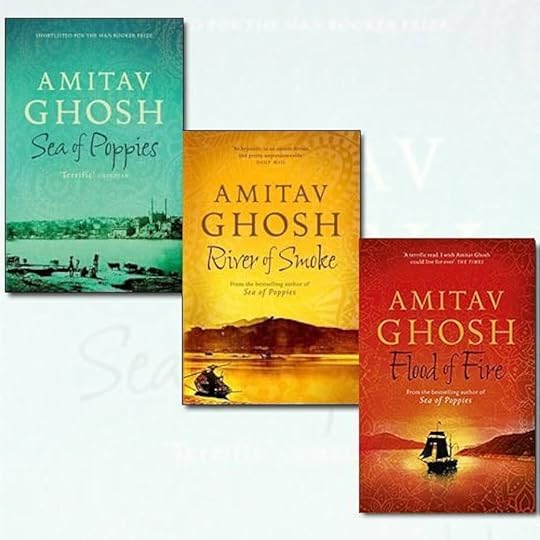 #6 -The Globalisation of Historical Narratives
.
#6 -The Globalisation of Historical Narratives
.
One of the coolest things about today’s world is that readers from all over the globe can read the same book and engage with it in different ways.
But this globalised audience also presents a unique challenge. What may resonate in one culture may not hit the same way in another.
Amitav Ghosh’s Ibis Trilogy explores the 19th-century opium trade between India and China, a subject that is often neglected in Western historical fiction. Through multiple characters, languages, and perspectives, Ghosh weaves a complex tapestry of colonialism, politics, and human suffering. His work demonstrates how historical fiction can have a global impact when done with cultural sensitivity.
The modern historical fiction writer must consider how their work might resonate with, or clash against, international audiences. A historical event that’s significant in one country may be less known in another. Writing for a diverse, global audience means taking extra care in your research and representation.
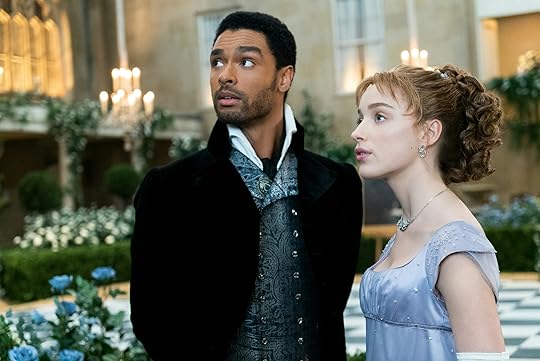
#7 -Adapting Historical Fiction for the Screen: Lights, Camera, Drama!
And then, of course, there’s the ever-growing popularity of adapting historical fiction into TV shows and movies. The rise of streaming platforms means that your historical novel might one day become the next big Netflix hit.
While this is fantastic for visibility, it also brings new challenges. When historical fiction gets the movie treatment, things tend to get… simplified for the screen.
Shonda Rhimes’ Bridgerton (based on Julia Quinn’s novels) reimagines Regency-era London with a racially diverse cast, a bold move that sparked a lot of debate. Some praised the show’s inclusive casting, while others questioned the historical plausibility.
But that’s the thing: when history meets Hollywood, it’s not always the same thing.
Authors now have to consider how their books might be interpreted through visual media, which means their historical narratives might undergo some dramatic changes, literally. It’s a wild ride, but one that keeps things interesting!
Final Thoughts: The Fine Art of Navigating Between Past and Present .Writing historical fiction today is like balancing on a high wire, except the wire keeps shifting, and the crowd is full of very opinionated critics. Authors are tasked with accurately portraying history while maintaining a story that is relevant, engaging, and respectful of modern values.
But let’s be real: it’s all worth it. The challenges make the genre more exciting and essential than ever. Historical fiction doesn’t just recreate the past; it questions it, making us reconsider how history has shaped the present. And isn’t that the best kind of fiction?
As we continue to navigate these challenges, we hope to build a future where we can better understand the past and create stories that connect, challenge, and inspire readers across the centuries. Now, that’s something to write about.
Now it’s YOUR turn – Which historical period would you write about, and why?
Would love to get your input in the comment box below.
The post Why Writing Historical Fiction Is a Modern-Day Challenge. appeared first on Vered Neta.
August 3, 2025
TV Review: Matlock (2024)
Creators: Jennie Snyder Urman.
Writer: Jennie Snyder Urman.
Starring: Kathy Bates, Skye P. Marshall, Jason Ritter, Beau Bridges
Tagline: Yes, She’s Older. No, She’s Not Done.
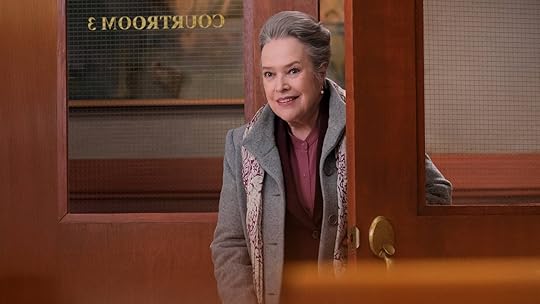
Before I started writing my TV pilot, Crime Cleaners, a quirky project about a group of spunky elderly women turned mob-hired crime scene cleaners, I spent months binge-watching shows and movies featuring older women.
And, surprise, surprise, I was wildly underwhelmed. There’s the odd Grace & Frankie standout, but beyond that? A whole lot of thin wisdom, summoning‑the‑grandkids tropes, and frankly, silence in the spotlight. That is, until I heard about the new Matlock.
Rebooting a beloved classic is risky business. (Looking at you, every remake that made me weep for the 90s.) But every once in a while, someone in a writers’ room somewhere whispers the unthinkable:
“What if we bring back an 80s courtroom drama… and make the lead an older woman?”
Cue the dramatic gavel slam, because Matlock (2024) does just that, and does it brilliantly.
Gone is Andy Griffith’s Southern-fried charm, and in its place?
Kathy Bates in a lemony yellow suit, wielding wit like a scalpel and walking into courtrooms with the weary grace of a woman who has seen some things.
And honestly? It’s about time.
What Matlock (2024) manages to pull off isn’t just a brilliant reimagining, it’s a masterclass in how to reboot an old IP with purpose, while also giving us something we’ve sorely missed on our screens: a complex, intelligent, working woman in her 70s who’s not defined by her children, her menopause, or a tragic backstory involving a cat. She’s defined by her brain, her strategy, and her refusal to be ignored.
Rebooting Done Right: Lessons for Screenwriters.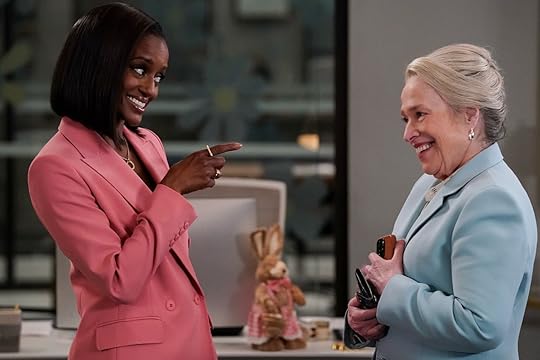 Let’s start with the obvious: Matlock doesn’t try to resuscitate the old show. It lets the 1986 version rest in peace and instead borrows the brand name and some tonal cues, then leaps forward with a clever twist.
Let’s start with the obvious: Matlock doesn’t try to resuscitate the old show. It lets the 1986 version rest in peace and instead borrows the brand name and some tonal cues, then leaps forward with a clever twist.
This time, Matlock is Madeline Matlock, a sharp, retired lawyer who’s lured back into the world of high-stakes litigation, except now she’s underestimated, overlooked, and frequently dismissed because of her age and gender.
Sound familiar?
Instead of pretending the world hasn’t changed, the writers lean into it. They use ageism as a story engine,
not a side note. Madeline’s biggest “weakness”, her invisibility in a room full of younger, louder professionals, is flipped into her greatest asset. People don’t see her coming, and that’s precisely how she wins.
That’s rebooting 101 for screenwriters: Don’t just update the wardrobe. Update the stakes.
Matlock works because it doesn’t try to replicate the old formula; it critiques it, reframes it, and ultimately evolves from it.
It’s not just a revival, it’s a reinvention. That rare screenwriting trick where something familiar is made to feel urgent again, like a genre waking up from a long nap and stretching into something more innovative, snarkier, and deeply satisfying.
Matlock says yes to that call.
The Real Reason to Watch: Kathy Freakin’ Bates.Look, if this show were just a well-structured legal drama with good writing, it would be fine. But with Kathy Bates at the helm, it becomes something special.
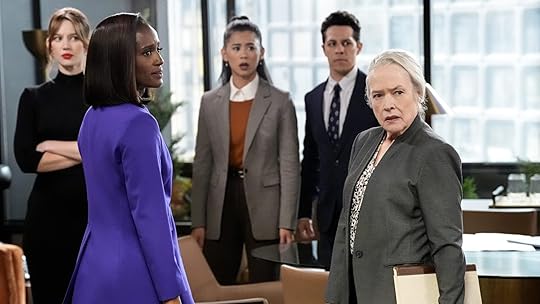 We all know Kathy Bates. She’s that scene-stealing aunt in the corner of the family gathering who drops one zinger and walks off with your heart. She’s been phenomenal in every role you’ve ever seen her in: Misery, American Horror Story, Primary Colors, you name it, but she’s rarely been the centre of the frame.
We all know Kathy Bates. She’s that scene-stealing aunt in the corner of the family gathering who drops one zinger and walks off with your heart. She’s been phenomenal in every role you’ve ever seen her in: Misery, American Horror Story, Primary Colors, you name it, but she’s rarely been the centre of the frame.
Until now.
As Madeline Matlock, Bates gives us a character that’s part Columbo, part Gloria Steinem, and entirely herself.
She’s brilliant, sure, but also compassionate. Vulnerable. A little sneaky. And gloriously unbothered by what others think.
Watching her go toe-to-toe with slick young lawyers, dodge tech she doesn’t care to learn, and deliver monologues that feel like they’ve lived in her bones for decades is… satisfying.
Like watching someone finally get the keys to the car they helped build.
Madeline is witty without being quirky, sharp without being cold, and commanding without having to shout. You feel like you’re watching a woman who’s spent decades becoming someone no one sees coming, and who knows exactly how to use that.
And if we’re being honest, how often do we get to see that? Women over 60 on screen are usually
relegated to side characters or inspirational mentors in flowing scarves. Here, Bates plays a character
who’s working, scheming, winning, and yes, even flirting. It’s about time.
She’s not “ageing gracefully.” She’s ageing powerfully.
Why It Matters.

What Matlock (2024) does brilliantly is offer a minor rebellion in every episode: the idea that ageing doesn’t mean fading. That older women aren’t just background noise; they’re the plot twist.
This matters. Not just because representation is important (though it is), but because it reflects something real.
Women in their 60s and 70s today are active, working, travelling, starting new businesses, divorcing and dating again, and going back to school. They’re not done. And yet television has been acting like they are.
So when Madeline Matlock walks into a courtroom and calmly dismantles a smug CEO or a hotshot junior associate, it’s not just cathartic, it’s revolutionary.
The Flawed Bits (Because No Show Is Perfect).
 Let’s be fair: Matlock has its courtroom cracks. Some of the legal manoeuvring is, well, iffy.
Let’s be fair: Matlock has its courtroom cracks. Some of the legal manoeuvring is, well, iffy.
If you’ve ever worked in law (or just binged The Good Wife), you’ll notice the show plays fast and loose with legal realism. The whole “retired lawyer gets rehired into a high-powered firm without much red tape” thing requires a suspension of disbelief the size of a Supreme Court bench.
And the supporting cast? Mixed bag. While Skye P. Marshall (as Olympia, Madeline’s firm ally) brings a grounded energy, and Jason Ritter offers some comic beats, not all the characters are as fleshed out as Madeline. A few side plots involving interns and family drama feel undercooked and sometimes distract from the sharper central storyline.
If anything, the show’s weakest link is trying to balance its “case-of-the-week” format with deeper character arcs. Some episodes feel like they’re not sure whether they want to be procedural or prestige. But hey, early seasons are for finding your stride, right?
Final Verdict: Worth the Gavel Slam. Despite its imperfections, Matlock (2024) is a standout. It proves that reboots don’t have to be lazy.
Despite its imperfections, Matlock (2024) is a standout. It proves that reboots don’t have to be lazy.
That reinvention is possible when it’s done with heart, purpose, and a killer lead. It also offers a rare and much-needed tribute to women of a certain age who refuse to go quietly into the cardigan-filled night.
So yes, watch it for the creative screenwriting. Watch it for the surprising plot twists. But mostly, watch it for Kathy Bates, who turns a courtroom into a stage and every scene into a masterclass.
Because sometimes, justice comes with a side of sass, and a pair of orthopaedic heels that will crush you in court.
Happy viewing and happy learning!
Verdict – 4.5/5 Stars in my book
The post TV Review: Matlock (2024) appeared first on Vered Neta.
July 20, 2025
What Makes Family Drama So Addictive in Stories.
Family: can’t live with them, can’t write a good story without them.
When I sat down to write my novel Things We Do For Love, I thought I was telling a deeply personal story.
A story inspired by my family’s journey with Alzheimer’s. But as I wrote, something surprising happened.
This wasn’t just a story about memory loss. It became a story about family—the messy, beautiful, complicated ways we collide, clash, and care for each other.
What blew me away was how much this story resonated with people from entirely different backgrounds.
It turns out that family drama is the one universal language we all speak. Love them or loathe them, families leave their fingerprints on us, whether we like it or not.
It’s no surprise that fiction is packed with unforgettable family stories. Whether it’s sibling rivalries, generational clashes, found families, or the delicious thrill of long-buried secrets, family dynamics are storytelling gold.
Let’s dive into seven family dynamics that make stories tick, tug at our hearts, and keep us coming back for more.
7 Flavors of Family Drama That Hook Audiences.
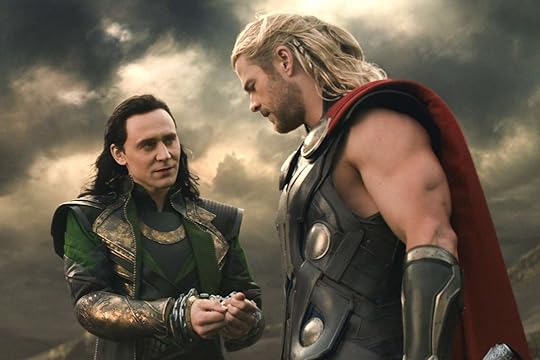
#1 – Sibling Rivalry and Loyalty: Love, War, and Who Got the Bigger Slice of Cake.
Ah, siblings. They can be your first best friends or your lifetime rivals (sometimes both in the same afternoon).
In Brit Bennett’s The Vanishing Half, twin sisters Desiree and Stella take wildly different life paths—one stays connected to her Black heritage, while the other chooses to pass as white.
Their choices ripple across generations, weaving a story of identity, loyalty, and the ache of what’s left unsaid.
On screen, no sibling duo is quite as magnetic as Thor and Loki in the Marvel universe.
Thor: golden, beloved, annoyingly perfect. Loki: mischief incarnate, forever stuck in the shadow.
Their love-hate dynamic (emphasis on the hate, but never quite losing the love) is a messy, addictive cocktail of rivalry, betrayal, and those rare, tender moments where you remember-oh-oh, they’re brothers.
Why It Works: Sibling stories feel real because most of us know what it’s like to fight for attention, feel overlooked, or be bound to someone we sometimes love and sometimes want to launch into space.
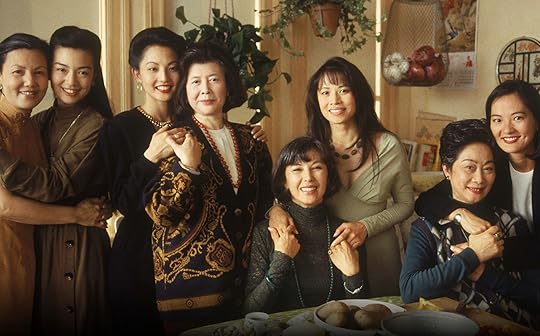 #2 –
Parent-Child Expectations and Rebellion:
The Dance of “I Love You, But Stop Telling Me What to Do”.
#2 –
Parent-Child Expectations and Rebellion:
The Dance of “I Love You, But Stop Telling Me What to Do”.
Parents. They raise us, mold us, and sometimes drive us up the wall.
Amy Tan’s The Joy Luck Club perfectly captures the cultural tug-of-war between Chinese-born mothers and their American-born daughters.
The mothers want to pass down their wisdom, but their daughters want to write their own stories.
It’s a tender, frustrating, and beautifully honest portrait of love across generations.
Greta Gerwig’s Lady Bird gives us the mother-daughter argument we’ve all had at least once.
Lady Bird and her mother love each other fiercely but can’t stop clashing over clothes, college, and, well, everything. Their relationship is raw, hilarious, and heartbreakingly real.
Why It Works: We all know what it’s like to want to make our parents proud, while also desperately wanting to slam the door on their advice. It’s a tension that never gets old.
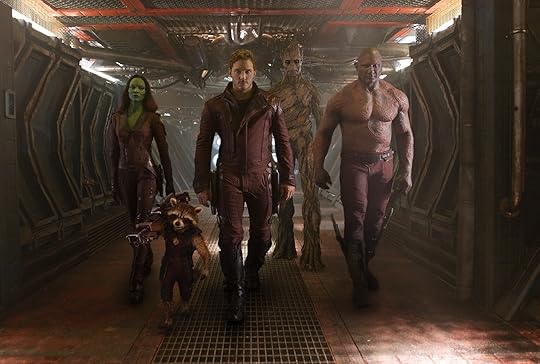
#3 -Found Families: Because Sometimes Your People Aren’t Your People.
Sometimes, the family you build matters more than the one you were born into.
In Leigh Bardugo’s Six of Crows, Kaz Brekker’s crew of misfits becomes a fiercely loyal (and slightly dangerous) chosen family.
They’re bound not by blood but by trust, survival, and the fact that no one else quite gets them.
Marvel’s Guardians of the Galaxy nails this too. Peter Quill, Gamora, Drax, Rocket, and Groot are the ultimate dysfunctional family. They bicker like siblings, but when it counts, they fight for each other. They aren’t related, but they’ve got each other’s backs.
Why It Works: Found family stories remind us that belonging isn’t always about genetics—it’s about the people who stick around when things get hard. They give us hope that no matter where we start, we can find our people.
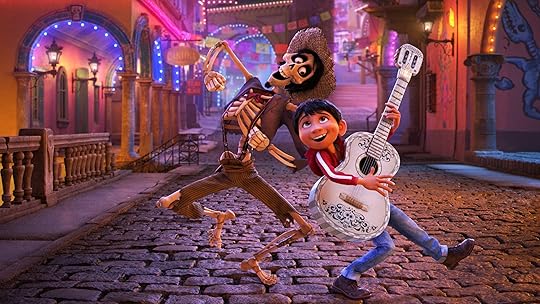
#4 -Family Secrets and the Weight of Legacy: What We Carry, What We Hide.
Some families come with heavy baggage—secrets, legacies, the stuff we pretend isn’t there.
In Diane Setterfield’s The Thirteenth Tale, a biographer peels back the layers of a family haunted by hidden identities and long-buried trauma. It’s gothic, it’s twisty, and it’s proof that the past never stays quiet.
Pixar’s Coco spins this theme in a joyful direction. Miguel’s family has banned music for generations
(a bold move in a Pixar movie), but his journey to the Land of the Dead uncovers forgotten stories, unspoken pain, and ultimately, healing. Family secrets, when revealed, don’t always destroy—they can set us free.
Why It Works: Who doesn’t love a juicy family secret? These stories let us wrestle with the question:
Are we destined to repeat the past, or can we break the cycle?
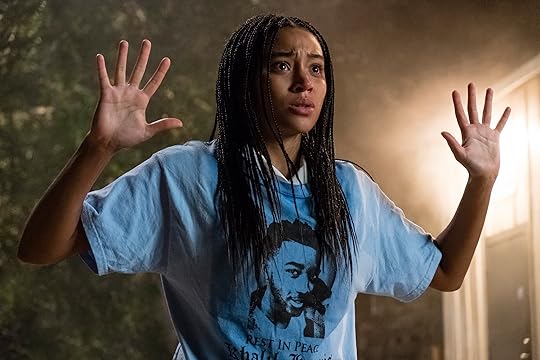
#5 -Blended and Non-Traditional Families: Love Doesn’t Always Follow a Rulebook.
Family structures aren’t what they used to be—and fiction is finally catching up.
In Angie Thomas’s The Hate U Give, Starr Carter’s blended family provides her with the strength to navigate issues of race, grief, and activism. Her family—both biological and chosen—is her anchor.
Instant Family brings this theme to the big screen with humour and heart. A couple adopts three siblings from foster care and suddenly finds themselves deep in the chaotic, unfiltered world of parenthood. It’s messy, it’s hard, but it’s also wonderfully real.
Why It Works: These stories reflect the way families look today. They remind us that love is what makes a family, not bloodlines or perfect beginnings.
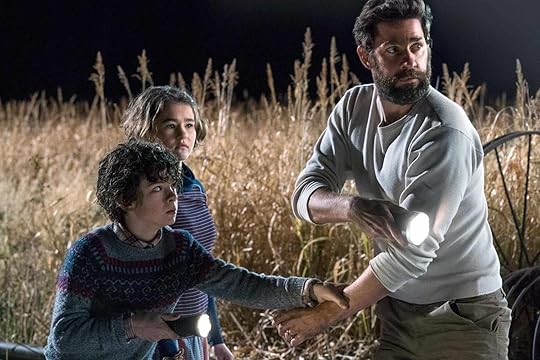 #6 -Sacrifice and Protection:
The Things We’d Do for the People We Love.
#6 -Sacrifice and Protection:
The Things We’d Do for the People We Love.
Sometimes love isn’t soft—it’s fierce. And sometimes it asks us to give everything.
In Celeste Ng’s Little Fires Everywhere, Mia Warren, a single mother, will do anything to protect her daughter, even if it means burning bridges (literally and figuratively).
Across town, Elena Richardson is fighting to hold onto her version of a perfect family, but perfection doesn’t always win.
In A Quiet Place, the Abbott family lives in terrified silence, hunted by monsters who kill at the slightest sound. Their entire world revolves around one thing: keeping each other safe. When the father makes the ultimate sacrifice, it’s devastating—but it’s also love in its purest, most selfless form.
Why It Works: Sacrifice stories hit hard because they show love in action. They remind us that protecting the people we love sometimes means losing something ourselves.

#7 -Estrangement and Reconciliation: The Long Road Back.
Sometimes families fall apart. But sometimes, they find their way back.
In The Light Between Oceans, Tom and Isabel’s life-altering decision to raise a child who isn’t theirs leads to heartbreak, guilt, and the long, painful process of making things right.
Lulu Wang’s The Farewell brings this theme to life with humor and tenderness. A family reunites under the guise of a fake wedding to secretly say goodbye to their terminally ill grandmother. It’s a story filled with love, cultural nuance, and the things we can’t always say out loud.
Why It Works: We’ve all experienced distance, whether emotional or physical. These stories give us hope that even fractured families can find a way back to each other.
Final Thoughts: Every Family is a Story .Family dynamics matter because they hold a mirror to our own messy, beautiful, sometimes infuriating lives. They let us explore universal themes—identity, loyalty, belonging, rebellion, forgiveness—all through the people who know us best and, sometimes, drive us the craziest.
Whether it’s the electric tension between siblings, the push-pull of parent-child relationships, the life-changing power of found families, or the delicate dance of estrangement and reconciliation, family stories remind us of what it means to be human.
Because no family is simple, but every family is a story worth telling.
Now it’s YOUR turn – What’s your all-time favourite family drama?
Would love to get your input in the comment box below.
The post What Makes Family Drama So Addictive in Stories. appeared first on Vered Neta.
July 13, 2025
The Truth About Memory and Character.
Let’s face it—memory is a trickster.
Just ask Raynor Winn, author of the bestselling memoir The Salt Path, who’s been making headlines not for her poetic prose but for the poetic license she may have taken with the truth.
Her story of homelessness, framed as the fallout from a bad financial investment and cruel legal fate, is now under scrutiny. Investigations suggest that a repaid loan under fuzzy circumstances may have played a role.
Deliberate or not, this literary kerfuffle opens the door to a juicy discussion: in storytelling—especially fiction—what role does memory play? And why does it matter so much?
Memory is never a neutral record. Even in real life, it’s messy—part truth, part emotion, part wishful thinking. In fiction, this complexity becomes a goldmine. Characters aren’t built just from what happened to them, but from what they think happened, what they wish had happened, or what they refuse to admit happened.
Their memories—whether tender or traumatic, accurate or altered—are often the beating heart of who they are.
In fiction, memory is more than backstory—it’s identity, motivation, conflict, and theme all rolled into one.
So let’s dive into seven fascinating ways memory fuels character development, and how it can make your storytelling not just better, but unforgettable.
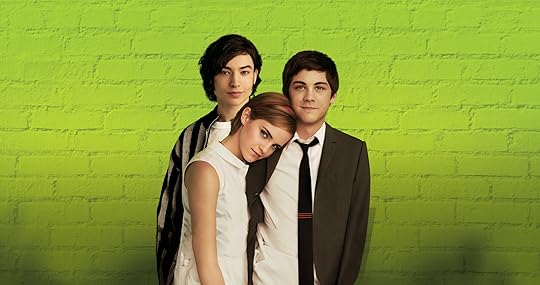
#1 – Memory = Instant Backstory with Feeling.
Every character has a past. But here’s the secret sauce: how they remember the past is where things get juicy.
A straightforward backstory might give you facts—”her parents divorced,” “he failed out of school,” “they lost someone they loved.” But facts don’t shape character—feelings do. That’s where memory comes in.
Memory is emotional. It’s selective. It’s a story we tell ourselves about the story that happened. And it reveals more about the character than the event itself ever could.
Take Charlie in The Perks of Being a Wallflower. His memories don’t arrive like a neatly typed diary.
They creep in, scattered and incomplete. As readers, we feel the emotional truth of his confusion and pain long before the traumatic memory at the core is revealed. And when it is, it’s not just an “aha” plot moment—it’s the emotional key that unlocks everything about him.
Characters defined by memory don’t just have depth—they earn it.
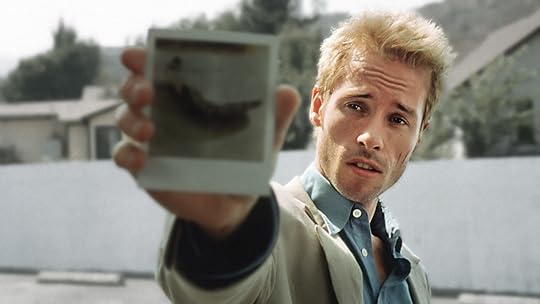 #2 – The Glorious Mind Games of Unreliable Memory.
#2 – The Glorious Mind Games of Unreliable Memory.
Memory is not a reliable narrator—and neither are many of our most intriguing characters.
There’s a reason writers love an unreliable narrator: it invites the reader to become a detective, sifting through memories like breadcrumbs on a dark trail.
But what makes this trope even richer is when the unreliability isn’t just a plot device—it’s part of the character’s emotional architecture.
Think of Memento, Christopher Nolan’s brain-scrambler of a film. Leonard, our protagonist, suffers from short-term memory loss. He tattoos clues on his body, leaves himself notes, and lives in a world of perpetual confusion. But here’s the kicker: he’s not just a victim of faulty memory. He’s manipulating his own memory—lying to himself to give his life meaning.
That’s storytelling dynamite. A character who alters memory to cope, to survive, to justify—isn’t just intriguing. They’re human. Deeply, darkly, heartbreakingly human.
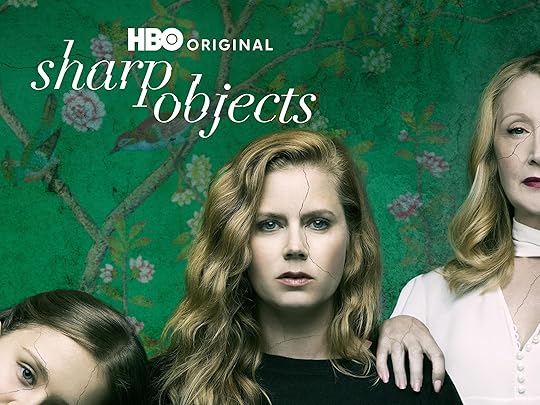
#3 – Trauma: The Memory That Doesn’t Want to Be Remembered.
Some memories don’t surface—they hide. They fracture. They scream from under the floorboards.
Trauma rewires the brain. It buries moments too painful to face and distorts others in ways that feel safer but are rarely true. In fiction, this becomes a powerful engine for character development.
Take Camille in Sharp Objects. Her return to her childhood home triggers a psychological landslide. The memories are there—waiting—but they don’t come gently. They crawl out in flashbacks, sensations, and self-destructive habits. Her story isn’t a linear journey—it’s a spiral inward.
Characters who suppress trauma are like haunted houses: everything looks intact, but the walls are whispering. And when they finally face what they’ve buried? That’s when the real transformation begins.
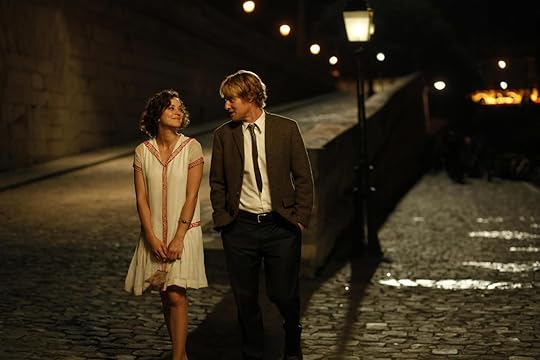
#4 –
Nostalgia: The Sweet, Sugary Lie
Not all memory is dark. Some of it is dipped in glitter and gold, and just as misleading.
Nostalgia is the emotional filter of memory on Instagram. It’s warm. It’s glowing. And often, it’s a total fantasy. However, that fantasy reveals volumes about what a character values, misses, or wants to escape.
Look at Midnight in Paris. Gil pines for the 1920s, romanticising it as the pinnacle of creativity and glamour.
But when he travels back in time (as one does), he discovers that even the 1920s crew was nostalgic for an earlier era. It’s a Russian doll of discontent.
Characters clinging to the past aren’t weak—they’re longing. That longing is emotional rocket fuel.
What are they avoiding in the present? What dreams did they lose along the way?
Those questions lead to rich arcs and bittersweet resolutions.

#5 – Rewriting the Past (A.K.A “Emotional Editing”).
We all do it—tweak a memory here, soften an edge there. It’s not lying exactly. It’s… self-preservation. Or maybe self-delusion.
Or sometimes, it’s growth.
In fiction, memory isn’t just something characters possess—it’s something they edit as they evolve. And that evolution is the story.
Eternal Sunshine of the Spotless Mind is the ultimate meditation on emotional editing.
Joel and Clementine undergo a procedure to erase each other after a painful breakup. But mid-process, Joel decides he wants to keep the memories—even the sad, bitter ones. Because without them, he’s not fully himself.
Characters who wrestle with their memories, who choose to reshape the past not by pretending it didn’t happen but by finding new meaning in it—those are characters we root for.
It’s the emotional equivalent of editing your life’s screenplay—and keeping the bloopers in.
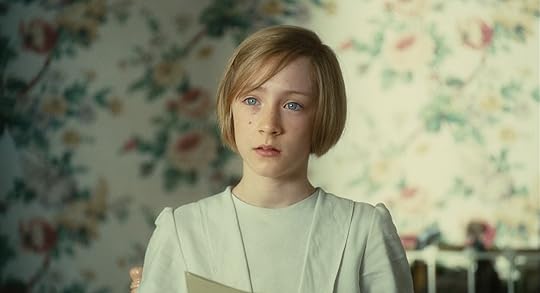 #6 – Inherited Memory: The Ghosts We Carry.
#6 – Inherited Memory: The Ghosts We Carry.
Not all memories are our own. Some are passed down like heirlooms—silent, heavy, and hard to shake.
Inherited memory can be cultural, generational, or familial. It shapes characters not just through what they experienced, but through what their parents, communities, or ancestors did.
In Atonement, Briony grows up burdened not just by her own guilt over a childhood mistake, but by the weight of the social class expectations and moral codes of her family and era. Her entire adult life—and writing career—is shaped by this need to rewrite or reconcile a past that shaped her, even if she was too young to grasp it at the time fully. She carries not only her own memory of the event but also the emotional fallout that ripples across generations.
This type of memory builds characters who are haunted not by ghosts, but by expectations. It asks hard questions: Can we escape our histories? What parts of the past are ours to carry—and which can we finally put down?
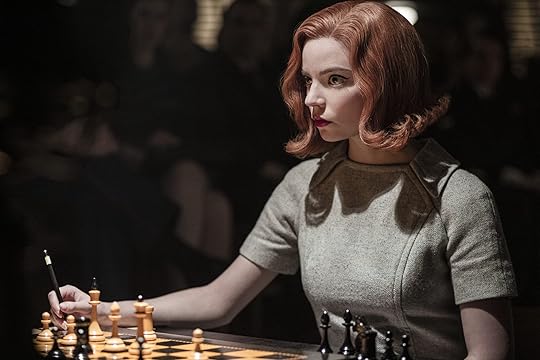
#7 – The Remix: Evolving Memory = Character Growth.
Here’s the satisfying payoff: when a character’s memory shifts, so does their identity. Not because the past changed, but because they did.
Growth isn’t about forgetting the past.
It’s about reframing it.
Beth Harmon in The Queen’s Gambit begins by seeing her mother’s death as abandonment.
But as she matures, she begins to understand her mother’s pain, her instability, her love tangled in tragedy. The memory hasn’t changed—but Beth has. And that change echoes through everything she becomes.
This evolution turns memory into a mirror: one that reflects not where the character was, but how far they’ve come.
Curtain Call: Why Memory Matters (A Lot).The Raynor Winn controversy reminds us that memory is never just about facts—it’s about framing.
It’s stitched together with emotion, need, fear, and hope. And in fiction, that’s a feature, not a bug.
So, dear writer: when shaping your character’s past, don’t just ask, “What happened?” Ask:
What does your character believe happened?What have they chosen to forget—or misremember?What stories are they telling themselves, and why?How does their memory protect or sabotage them?And most importantly: how do those memories evolve?Memory isn’t a dusty archive—it’s a living, breathing force in your character’s life. It can inspire love, fuel revenge, break hearts, or build hope. Use it well, and you’ll have readers remembering your characters long after the last page.
Now go forth and write gloriously complicated, memory-laden people. And if you forget how? Don’t worry. That just makes it more realistic.
Now it’s YOUR turn – What’s one memory your favourite character would erase if they could?
Would love to get your input in the comment box below.
The post The Truth About Memory and Character. appeared first on Vered Neta.
July 6, 2025
7 Movies That Changed the World.
When I started writing, I wasn’t aiming to write the next blockbuster or become the next literary darling.
I had one simple goal: I wanted to change the way people see Alzheimer’s.
You see, Alzheimer’s is often the monster under the bed—the thing we fear most as we get older.
For many, it feels like the ultimate loss: of memory, of identity, of connection.
But from my own experience with my mum, I realised something few people talk about.
There’s another side to this disease.
Yes, Alzheimer’s is heartbreaking. Yes, it’s messy and frustrating.
But it’s also an unexpected invitation—an opportunity for families to come together, to discover new ways to love, to change how we see the person behind the diagnosis.
That’s why I wrote Things We Do For Love. I wanted to offer a different lens—a reminder that even within the heartbreak, there can be moments of beauty and grace. If I could ease the journey for just one person navigating this terrifying disease, then maybe my words could make a (small) difference.
And that made me wonder: What’s our role as writers? Are we just here to entertain? Or do we have a responsibility—perhaps even a moral obligation—to make a small dent in the universe?
Storytelling: More Than Background Noise.We tend to think of stories as a form of escape. We read books, watch movies, and binge shows to take a break from life. But stories do more than entertain us. Long before TED Talks and Twitter threads, stories were shaping the way we see the world. They sneak under our skin, rearrange our thoughts, and sometimes—if they’re really good—they change how we see the world.
Stories can soften hearts, ignite movements, topple old beliefs, and rewire entire generations.
And here’s the best part: they don’t need to hit us over the head with manifestos.
They just need to give us characters we care about and journeys that leave us forever changed.
And when it comes to reaching the masses, cinema has a unique superpower.
Films aren’t just watched—they’re felt. They make big social conversations personal.
They bring distant issues right into our popcorn-filled laps.
So let’s explore how stories have sparked real change on the big screen—and why your story, yes yours, might be the next one to do it.
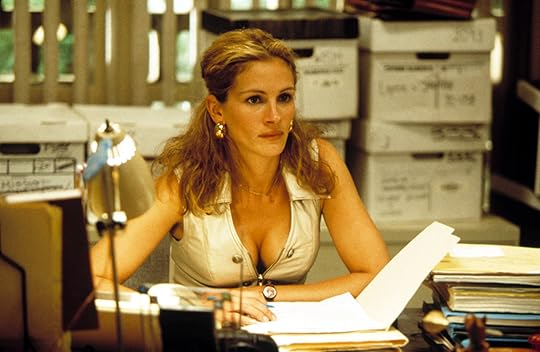
#1 – Stories Make the Invisible Visible.
There are injustices happening all around us that we simply don’t see—or worse, we choose not to see.
Sometimes they’re buried under layers of bureaucracy, sometimes they’re dismissed as someone else’s problem. Stories can pull back the curtain and shine a light on these hidden truths.
Take Erin Brockovich. This film could have been a dull legal case about water contamination. Instead, it became a gripping story about one single mum in a tight skirt who refuses to shut up.
Erin isn’t a lawyer, a scientist, or a superhero—she’s just someone who cared enough not to walk away. Through her, we see the human cost of corporate negligence: children getting sick, families betrayed by the very companies meant to serve them.
The power here isn’t in the facts—it’s in the emotional weight. After the film’s release, environmental accountability gained public momentum, and the real-life company, PG&E, found itself under a very public microscope.
Takeaway: Stories can shine a light on the things we’d rather not see. And once you see them, you can’t unsee them.
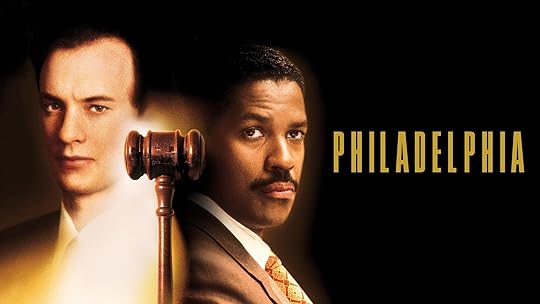 #2 – Stories Start Cultural Conversations.
#2 – Stories Start Cultural Conversations.
There are topics that, for far too long, society has tiptoed around—things we whisper about but rarely address head-on. Stories can smash through that silence.
Enter Philadelphia. Before this film, mainstream Hollywood didn’t go near HIV/AIDS, let alone the homophobia that accompanied it.
But Philadelphia forced the conversation into the spotlight. Through Tom Hanks’ powerful performance, audiences were invited to see the humanity behind the headlines—to feel the weight of injustice, fear, and discrimination.
This story didn’t solve the AIDS epidemic. It didn’t erase the stigma overnight. But it made people talk. It cracked the door open for empathy. And sometimes, empathy is the first domino that starts real change.
Takeaway: Sometimes a story’s greatest power is not in preaching, but in daring to humanize the things people have been too afraid to say out loud.
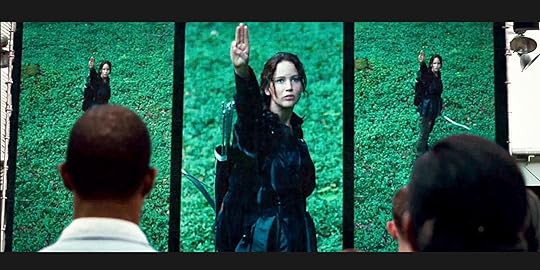
#3 – Stories Question the Status Quo.
Some stories don’t just highlight problems—they grab us by the collar and demand: Why do we accept this? They challenge the systems and norms we’ve come to believe are just “the way things are.”
The Hunger Games did exactly that.
What began as a dystopian YA novel exploded into a global cultural movement.
Katniss Everdeen’s journey from reluctant survivor to symbol of rebellion didn’t just entertain—it made young audiences, especially girls, see themselves as leaders and fighters.
And it didn’t stop on the screen. Protesters in Thailand and Hong Kong adopted Katniss’s three-finger salute as a symbol of resistance against real-world oppression.
When a story starts appearing in political demonstrations, you know it’s struck a nerve.
Takeaway: Stories can leap off the screen and into the streets, giving people new symbols, new language, and the radical reminder that the status quo is a choice—and choices can be changed.
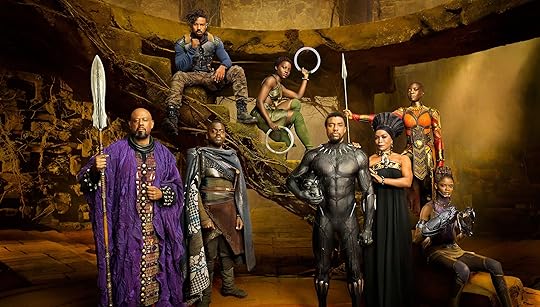
#4 – Stories Redefine the Hero.
For too long, our heroes on screen mostly looked the same: white, male, and often armed with more gadgets than emotional depth.
But stories have the power to flip that script.
Black Panther didn’t just give us a superhero—it gave us a new kind of superhero.
T’Challa was noble, compassionate, and deeply connected to his heritage.
Wakanda wasn’t a struggling nation waiting for Western intervention—it was a thriving, independent society that challenged colonialist narratives.
For Black audiences, especially kids, Black Panther was more than a blockbuster. It was a seismic shift in representation. It told millions of people: You can be the hero. You can be the genius. You can wear the cape.
Takeaway: Stories can redraw the lines of who we see as worthy, powerful, and heroic—and once they expand who gets to take center stage, that door rarely closes again.

#5 – Stories Kickstart Movements.
Who knew a slideshow could ignite a global movement? Sometimes a story doesn’t just start a conversation—it starts a revolution.
An Inconvenient Truth is the perfect example. On paper, it’s a documentary about climate change.
Sounds dry, right? But the film, driven by
Al Gore’s passionate storytelling, made the climate crisis personal. It showed us the stakes, the urgency, the faces behind the data.
And people listened. The film is widely credited with reigniting public awareness about global warming and fueling the modern environmental movement. Suddenly, sustainability wasn’t just for scientists—it was a dinner table topic.
Takeaway: Even the nerdiest stories can spark a revolution when they’re clear, urgent, and emotionally anchored—because that’s the kind of storytelling that truly changes the world.
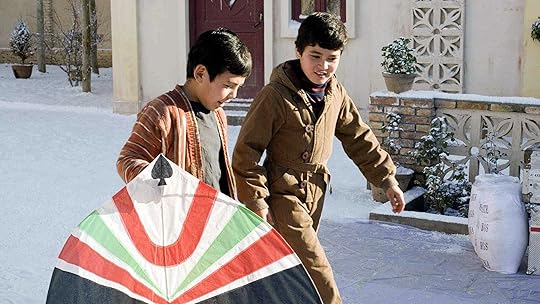 #6 – Stories Build Empathy Across Borders.
#6 – Stories Build Empathy Across Borders.
There’s something magical about stories that can transport us into lives and cultures that are completely different from our own.
When we walk in someone else’s shoes, even just for a couple of hours, our capacity for empathy expands.
The Kite Runner does this beautifully.
Set in Afghanistan, the story follows the heartbreaking friendship between two boys torn apart by betrayal and political upheaval.
It’s a story of guilt, redemption, and the painful paths we take to forgiveness. For many Western audiences, Afghanistan was just a name on the news, often linked to war, terrorism, and tragedy.
The Kite Runner gave it faces, histories, and heart. It reminded us that behind every news headline are human beings with stories just like ours.
Takeaway: Stories can dissolve cultural barriers, build bridges where walls once stood, and gently remind us of our shared humanity—one heartbeat at a time.
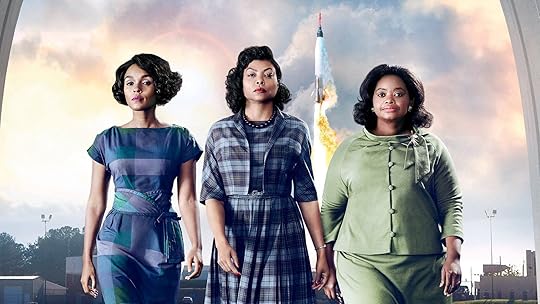
#7 – Stories Show Us How Change Happens.
Some stories don’t just highlight what’s wrong—they show us what’s possible. They offer maps, strategies, and a vision for how things can be better.
Hidden Figures does exactly that. It tells the real-life story of Black female mathematicians who played critical roles in NASA’s space race.
These women weren’t loud revolutionaries—they were quiet trailblazers who chipped away at systemic racism and sexism from the inside.
By telling their story, the film didn’t just rewrite history—it reshaped the future. Schools began including these women in their science curricula. Young girls, especially girls of colour, saw themselves in new roles they hadn’t imagined before.
Takeaway: Stories can rewrite the narrative and give us new role models—not just by showing what’s broken, but by shining a light on those already fixing it.
Writing for Change Starts with Why.So, do you need to write a big, sweeping political drama to make a difference? Absolutely not.
Sometimes, change is loud and visible. Sometimes it’s small and quiet—a flicker of recognition, a crack in an assumption, a question that lingers.
Your story doesn’t need to solve world hunger. It doesn’t have to topple the patriarchy by Thursday.
It just needs to matter to someone. If your story makes one person feel seen, if it opens one heart, if it shifts one stubborn little idea—you’ve already written for change.
So go on—write boldly, write truthfully, write like it matters. Because it does.
Now it’s YOUR turn – What story changed the way you see the world?
Would love to get your input in the comment box below.
The post 7 Movies That Changed the World. appeared first on Vered Neta.



